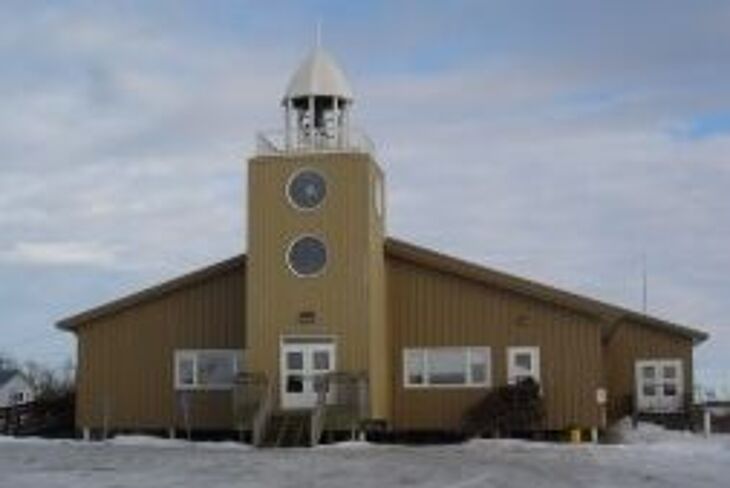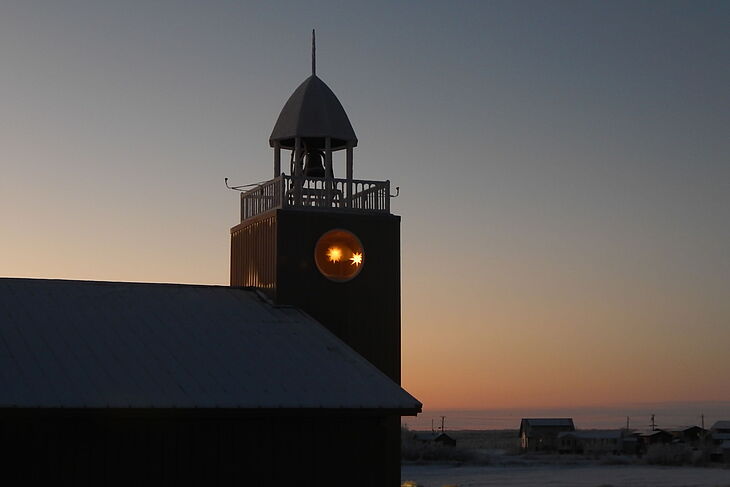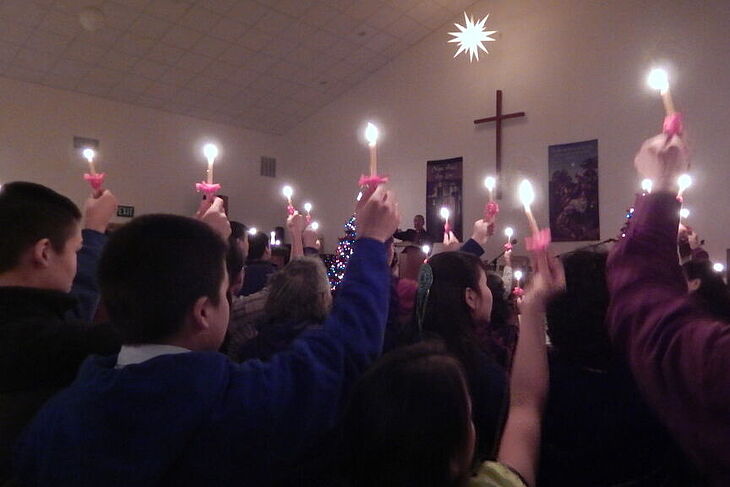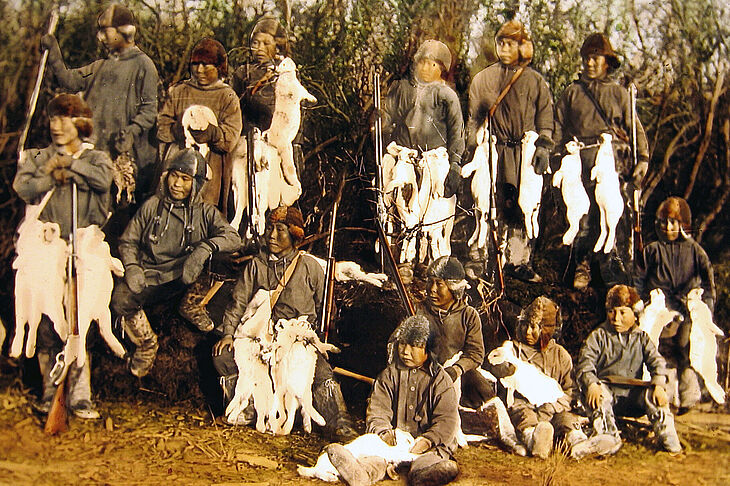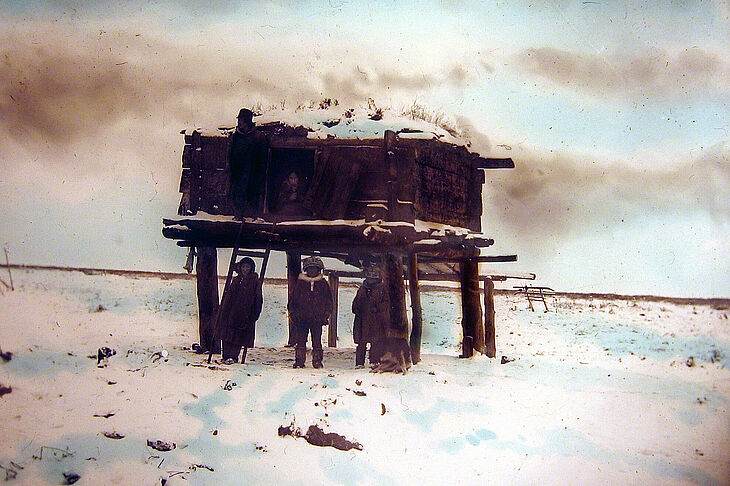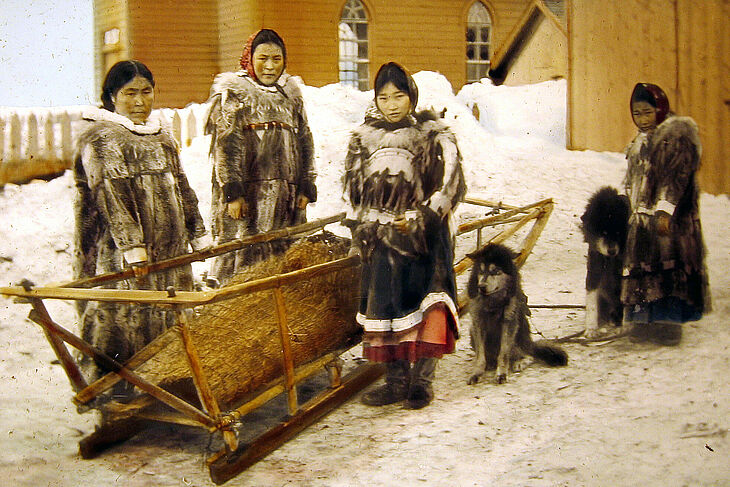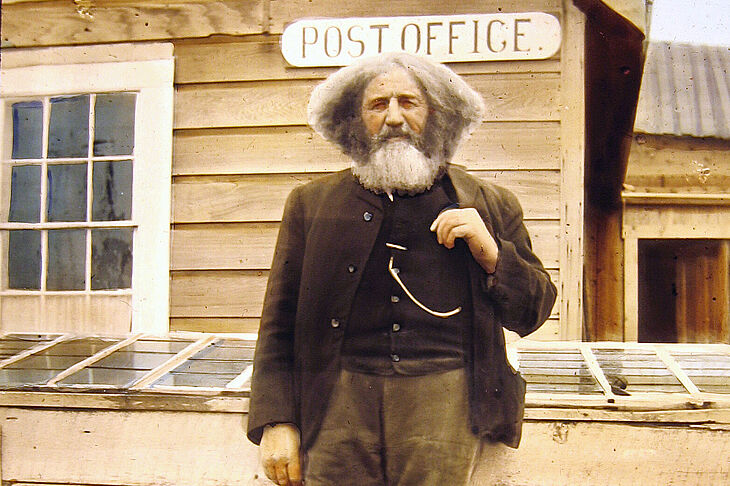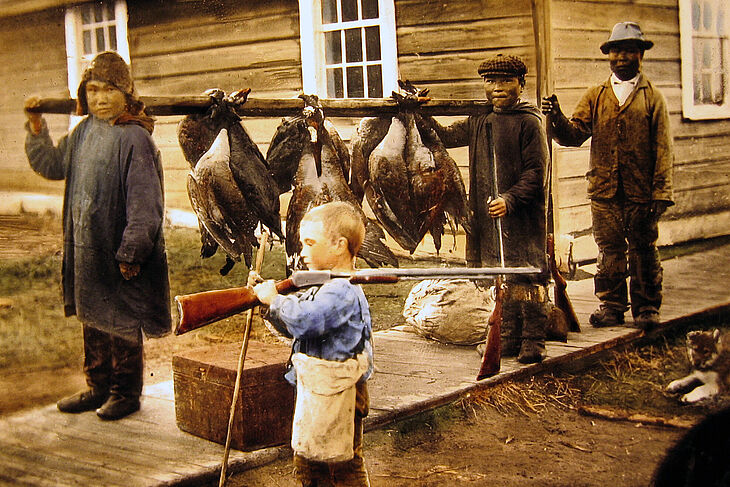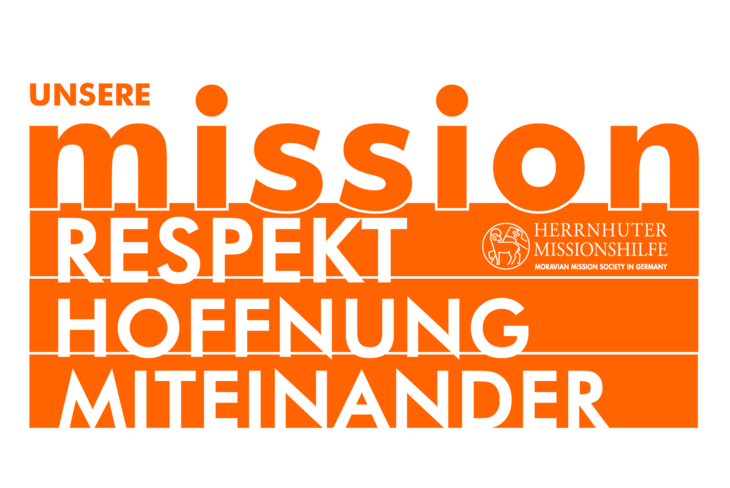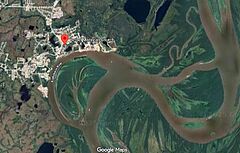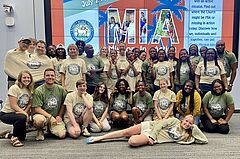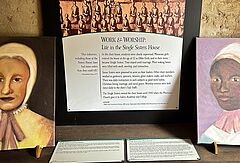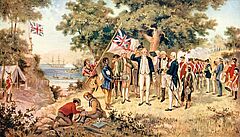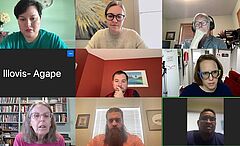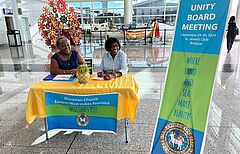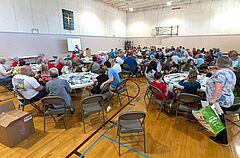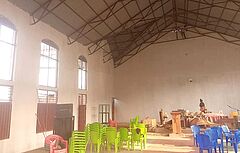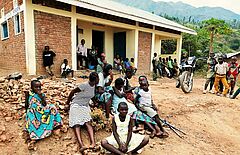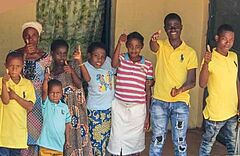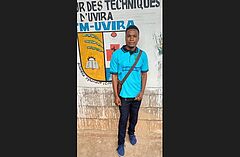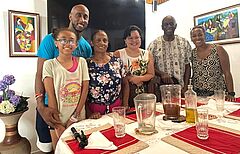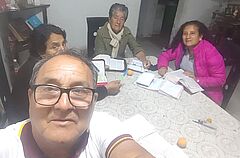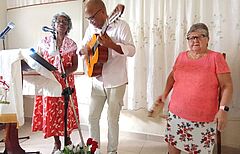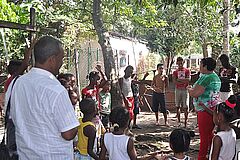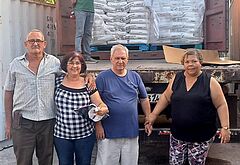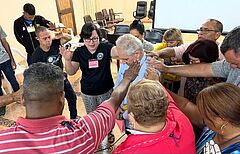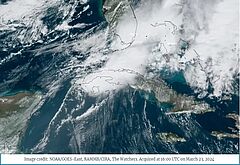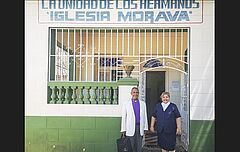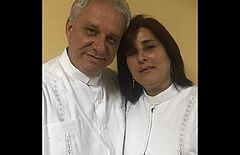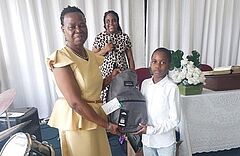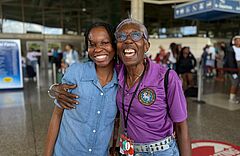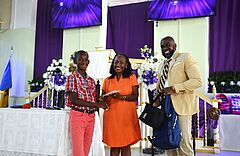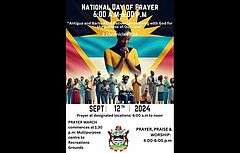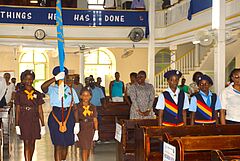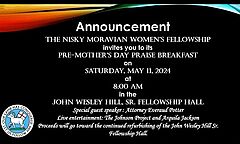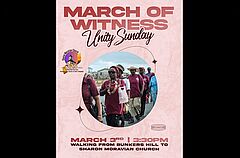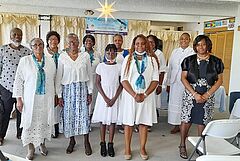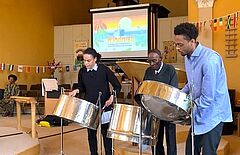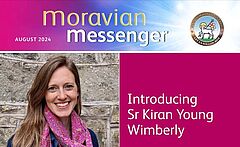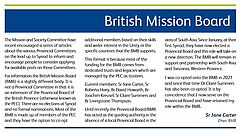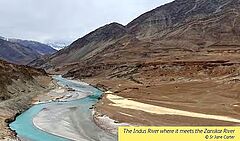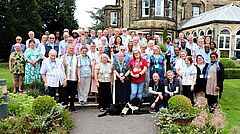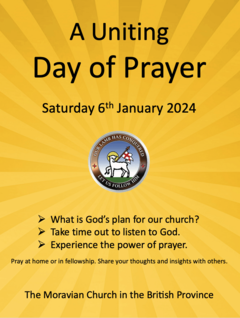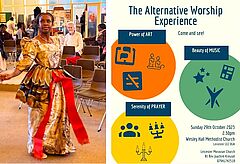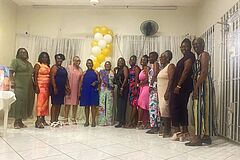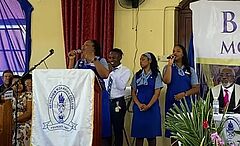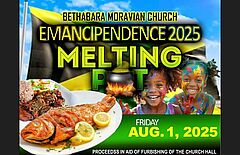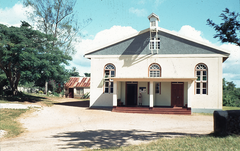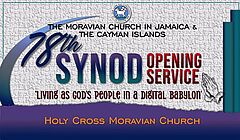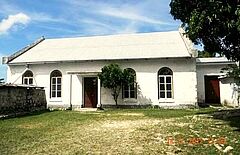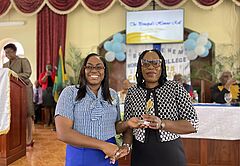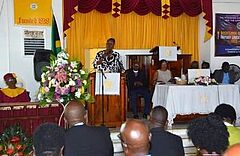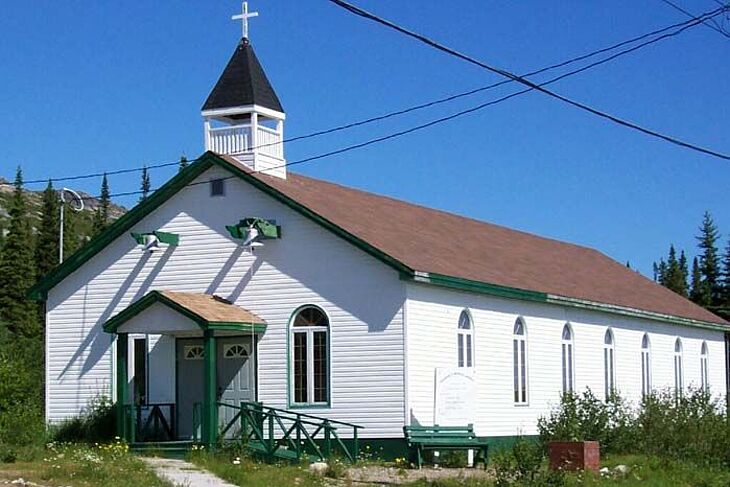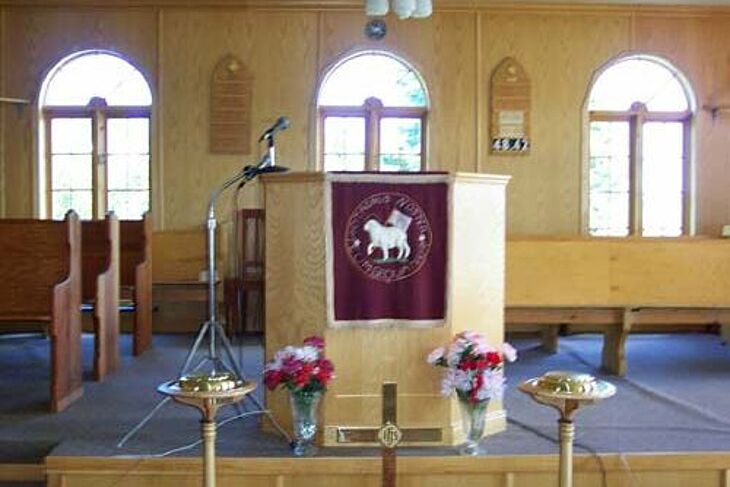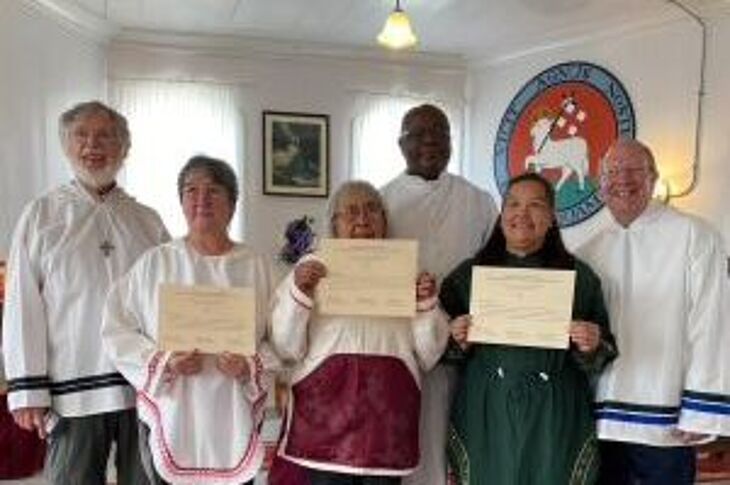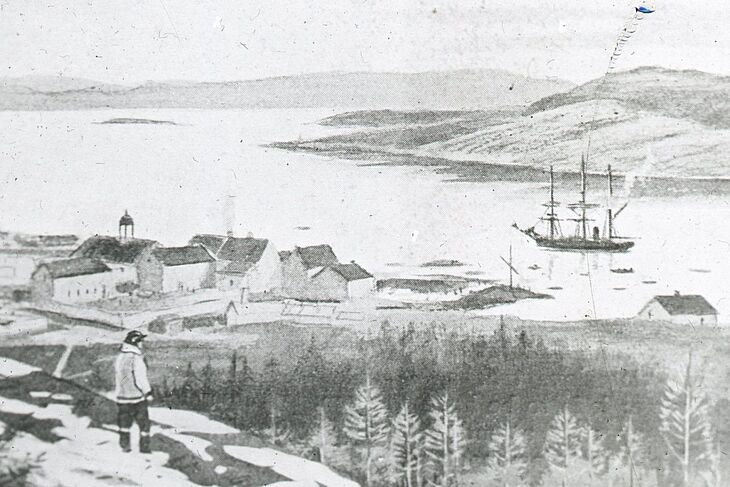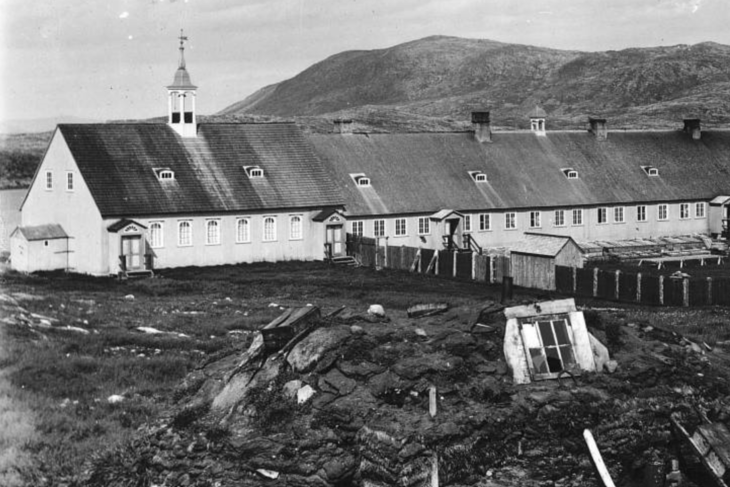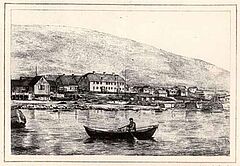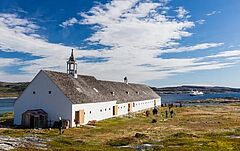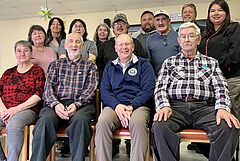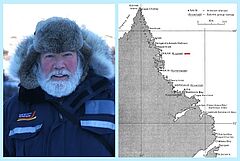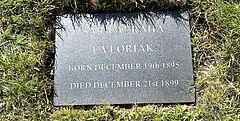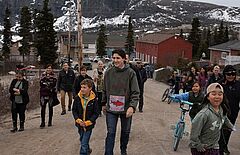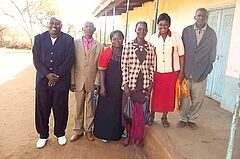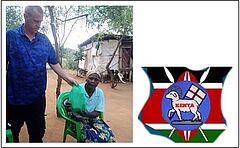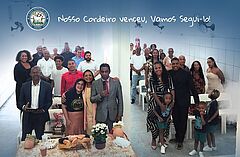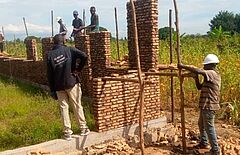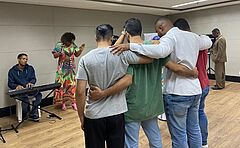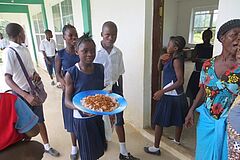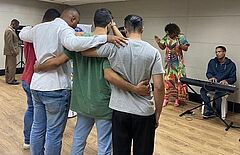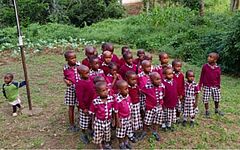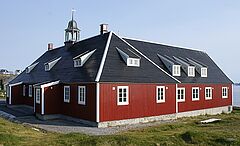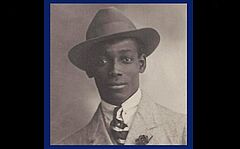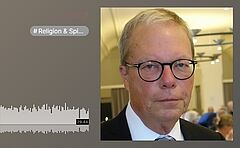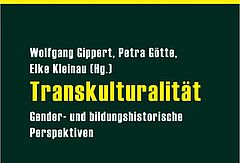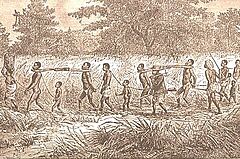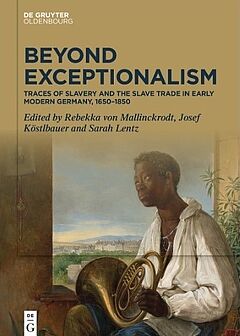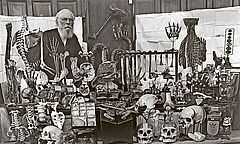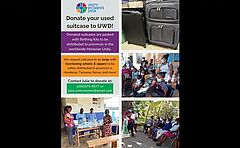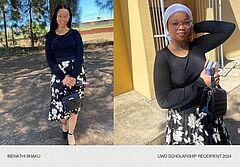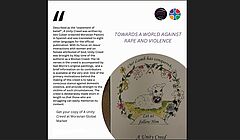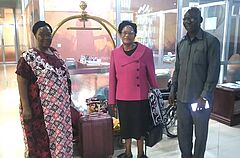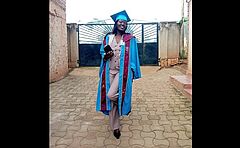News of the worldwide Unity
Here you will find brief information about some Unity provinces and mission areas, as well as the information about them from our newsletter.
Alaska
Work in Alaska began soon after Alaska was sold to the United States. In 1885, the American work was extended to the new territory of Alaska. Experience in arctic regions had long existed through work in Greenland, which began in 1733, and in Labrador, where the first mission station was established in 1771.
In the sparsely populated area, missionaries had to be very mobile from the beginning to follow the Yupik. They alternated between summer and winter quarters and depending on hunting grounds. By now, most of Alaska's inhabitants have settled down. Given the small populations, Alaska's congregations are also small in number and often far apart.
The transformation process of sedentarization, with multiple problems such as alcohol abuse, drugs, and domestic violence, has also affected congregations in the province of Alaska.
In 1983, the first indigenous bishop was elected, and in 1984 a Bible school was established. Since 1988, Alaska has been a full-fledged Unity Province with its headquarters in Bethel.
Pictures Alaska
News from this region
Update after Typhoon Halong swept through western Alaska
Six days after Typhoon Halong struck western Alaska on October 12, 2025, there is an update from the region. Damage was reported in the Moravian Congregations of Kongiganak, Bethel, Napakiak, Kwigillingok, Napaskiak, Kipnuk, Quinhagak, and Tuntutuliak. Hundreds of people from Kwigillingok, Kipnuk, and other flooded and destroyed villages were evacuated by the National Guard to Bethel and Anchorage in huge military transport planes. Moravian Church facilities in Alaska have begun to help those left homeless by the storm, providing shelter in the church in Bethel and at the Moravian Bible Seminary in Bethel. Several people are still missing. The Moravian Church's Board of World Mission (BWM) in North America has initially transferred US$10,000 as emergency aid. Together with local organizations and regional partners, further ways to help are being sought. More here. Donate online to the disaster relief fund here.
Moravian Church building from 1926 in Kwethluk/Alaska burnt down
As reported by the media in Alaska, the vacant buildings of the Moravian Church five kilometers from Kwethluk/AK - formerly Nunapitsinghak - burned down completely on March 2-3, 2025. This affected the large Nunapitsinghak Moravian Children's Home (closed in 1973; last operated by the United States Bureau of Indian Affairs), the church and the Moravian Church store as well as several outbuildings. A video of the fire here. A longer photo report by KYUK Media here (also with historical photos). The destruction of the buildings was not arbitrary, but was decided by the Council of Elders of the Moravian Church Bethel/AK, which owns the properties, to avert physical and psychological danger, according to Pastor Clifford Jimmie. The events at the children's home were particularly traumatic for the indigenous Yipìk who were housed there until 1973. They were forcibly alienated from their own culture and quickly Americanized. In recent times, occult activities had also taken place in the now burnt down buildings and drugs had been traded. The Council of Elders in Bethel/AK is now considering what to do with the remains of the fire and the empty properties.
Eco-trickfilm from an elementary school in Bethel/Alaska and congregation retreat days in Bethel
- In a five-minute animated film (animated children's drawings with watercolors), eleven-year-old Yup'ik Gus Erikson from Gladys Jung Elementary School in Bethel (formerly: Kilbuck School after a Moravian missionary from the Lenape/Delaware people) vividly tells of life in southern Alaska, the tundra landscape, the flora and fauna, fishing and hunting as well as the special challenges in the country. He also talks about climate change and explains terms such as permafrost. Watch the movie here.
- Mamterillermiut Moravian Church in Bethel, Alaska, is planning two congregation retreats for the second time, February 7-9, 2025, with the theme: God's Promises. Biblical theme: Revelation 21:4 The speakers are: Frank Matthew and Adam Kashatok. Mamterillermiut is the pre-Christian name of Brethel and means Smokhouse People = smokehouse people after a nearby old fish smokehouse.
Adventure tourists invited to Bethel/AK
On its website, Alaska Travel magazine invites you to visit the regional capital of Bethel on the Kuskokwim River (40 miles from the Bering Sea). See here. Bethel was home to 6,400 people; it was the largest indigenous congregation in Alaska. With the establishment of a mission station in 1884, the Moravian Church ensured that what had been a trading post since 1870 became a real town. Before the settlement was named after a place in the Holy Land, the indigenous Yup'ik living here called themselves ‘Mumtrekhlogamute’ (i.e. Smokehouse People). More than two thirds of the population of Bethel are still Yup'ik today, who fish for salmon, hunt wild birds and gather berries. In Bethel there is a local Moravian congregation, the Moravian theological seminary and a Moravian bookshop. The Unity Province of Alaska includes 24 congregations.
Team of archaeologists visited the Moravian Church of Quinhagak, Alaska
The prestigious Archaeology Magazine recently reported in a long article by Daniel Weiss on archaeological investigations in Alaska, especially in the Yukon-Kuskokwim Delta, an area in which the Moravian Mission worked from 1885. The archaeologists also visited the Moravian Church of Quinhagak, where mainly indigenous Yup'ik people live. The article states: "The Moravians were particularly successful in suppressing mask dances and other traditional Yup'ik customs. As a result, the Yup'ik congregations believed that their own traditional religious practice was fundamentally wrong and that all forms of dancing were a sin. Many community members also died as a result of epidemics brought into the country by the missionaries. The excavation helped the Yup'ik people of Quinhagak to reconnect with their lost heritage. Several residents took part in the excavations." To the article here.
America
There were two reasons for the beginning of the Moravian Church's work in North America. On the one hand, Zinzendorf was forced by ecclesiastical problems in Saxony to seek new settlement opportunities for the growing Moravian Church. In German-influenced Pennsyvania, he settled sisters and brothers and tried to establish consensus through ecumenical debates among the settlers, who had emigrated to America mainly for reasons of faith. This ecumenical alliance failed, but the Moravian Church settlements grew. On the other hand, direct missionary work to the indigenous people could be done there. The missionaries could not prevent their expulsion and partial extermination.
Today there are two Unity Provinces in the USA: the Unity Province America North with its headquarters in Bethlehem (Pennsylvania) and the Unity Province America South with its headquarters in Winston-Salem (North Carolina). Together they finance and operate the Board of World Mission BWM, the sister organization of Herrnhuter Missionshilfe in the USA, which is primarily concerned with relations with the Central American and Caribbean Unity Provinces.
News from this region
1,360 miles by bike for the Moravian Mission
On Sunday, September 7, 2025, twelve full-time and volunteer staff members of the Board of World Mission (BWM) of the Moravian Church in North America, the sister organization of Herrnhuter Missionshilfe, traveled distances of 30, 50, 70, or 100 miles, covering a total of 1,360 miles on their bicycles to raise as much money as possible for the Door County Century Ride Each employee had gathered sponsors who donated a predetermined amount for each mile cycled. The routes for the approximately 3,000 cyclists were all located in the US state of Wisconsin, on the large, scenic Door Peninsula on the eastern shore of Lake Michigan. Information about the tour can be found here. Numerous pictures of the BMW cycling team can be found here. The team promised to use the mission donations collected in such a way that they will still be of benefit in 100 years' time. PS: One US mile is 1,609.344 meters long. In total, the BMW team covered just under 2,200 kilometers.
2024 Annual Report of the Board of World Mission published
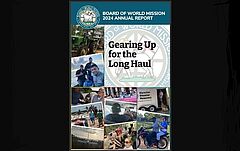
The Board of World Mission of the Moravian Church in North America recommends its newly published 2024 Annual Report: "Looking for something good to read in the morning? Then you've come to the right place: you'll find our report in Moravian Magazine (2-2025), which will be in your mailbox this week! The report highlights our successes over the past year, but above all reflects our preparations for the future. Individuals have their say, as do congregations and global partners. We are investing in leadership and long-term sustainability. And we invite you to join us on this journey for the long haul. Thank you for being part of this adventure. Thank you for your support and willingness to continue lacing up your shoes, filling your backpacks and setting off – no matter how many kilometres lie ahead. We are delighted that you are taking this journey with us." Click here for the annual report in English.
Moravian Church in Winston-Salem committed to Cuba
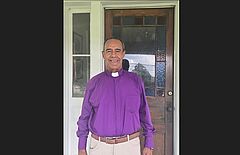
On Sunday, 10 July 2025, a service was held at the Friedberg Moravian Church in Winston-Salem, North Carolina, with the first and so far only bishop of Moravian Church origin from Cuba, Armando Roglio Rusindo. A photo can be found here. The bishop preached and also led the subsequent communion service. An ‘Evening of Gratitude and Giving’ was announced for 16 August 2025 at the Moravian Centre in Winston-Salem, North Carolina. During this evening, an auction will be held to benefit the Moravian Church in Cuba. It will be a so-called ‘silent auction’. Within 60 minutes, bids can be placed with the auctioneer for each item offered (e.g., a painting, a baking pan, a bottle of whisky, a garden lantern, a toy airplane, a tableware set). However, the bidders do not know the alternative offers. See here.
Fundraising event in aid of the Moravian Church in Cuba
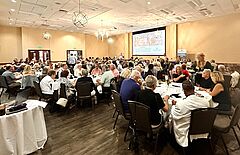
Around 150 friends of the Moravian Church in Cuba from eleven congregations in the Southern Province of the Moravian Church in North America gathered on 16 August 2025 from 6 p.m. until late in the evening at the Masonic Centre in Winston-Salem, North Carolina, for a fundraising event in aid of the Moravian Church in Cuba: An ‘Evening of Gratitude & Giving’ with a banquet, silent auction, music and many other activities, organised by the Armando Rusindo Mission Foundation (ARMF). More than 30 volunteers ensured that everything ran smoothly. Photos here. The total proceeds from the event are not yet known. The ARMF writes in its mission statement: ‘We are a Christian organisation dedicated to the spiritual and physical well-being of all people in need in Cuba and beyond. We are actively involved in building relationships with communities and providing resources where needed.’
“Moravian Youth Convo 2025” ends in Miami
The Moravian Youth Convo 2025 in Miami, Florida, came to an end on July 7, 2025. With the theme Mission in Action, it was an unforgettable week of fellowship, learning, worship, and fun for everyone involved. People from Jamaica, Antigua, Barbados, Trinidad & Tobago, and the USA (St. Thomas, Florida, North Carolina, Pennsylvania, New York, Maryland, and Wisconsin) took part. The program sessions and worship services were led by Rev. Dr. Riddick Weber, Rev. Brian Dixon, and staff from the Board of World Mission of the Moravian Church in North America. The young people stayed at both the New Hope Moravian Church and the Prince of Peace Moravian Church. They also visited prominent tourist sites. Much of the convocation was spent with program times, worship services, singing, and sharing experiences from their respective home areas, so that participants gained new and useful resources. A group photo can be found here.
Moravian Church in Winston-Salem, North Carolina, commemorates Anna Maria Samuel
On June 19, 2025, the United States celebrated Juneteenth (short for June Nineteenth), a national holiday established in 2021 to commemorate the liberation of the last enslaved African Americans in Galveston, Texas. The Moravian Church's Salem College in Winston Salem, North Carolina, used this day to commemorate the black woman Anna Maria Samuel. She was born into slavery in 1781 and lived with her parents Johann and Maria Samuel, who also worked as slaves for the Moravian Church. The family lived in Bethabara and was a member of the church. Johann was the first to be baptized in the Moravian Church in Salem. Anna Maria was baptized at birth and grew up in the Moravian Church. At the age of 11, she joined the girls' choir in Salem. Later, she moved into the house for single sisters. With these sisters, she took part in the daily meetings of the sisters' choir and the congregation. Returning to Bethabara, she finally gained her freedom in 1797. More here.
Reflection on synodal reconciliation resolution has begun
In many white congregations and congregations of color in the Unity Province of North America North, but also in the provinces of Alaska, Labrador and North America South (including immigrant congregations), consideration is currently being given to the implementation of a resolution passed by the Synod of the Unity Province of North America North as early as 2023: Repudiation of the Doctrine of Discovery and Terra Nullius and Initial Steps Towards Reconciliation and Healing of the Church's Relationships with Indigenous Peoples (Repudiation of the Doctrine of Discovery and No Man's Land and InitialSteps Towards Re conciliationand Healing ofthe Moravian Church's Relationships in North America with Indigenous Peoples). PDF with the text of the resolution in English here. Three ZOOM lectures from December 2024 on the topic here. The marginalized indigenous members of the Moravian Church in North America have long been waiting for symbolic gestures from white Americans, for fraternal bridge-building and also for material reparations for injustices suffered in the past.
Immigration course completed
Members of the Moravian Church from the two Unity Provinces in North America have completed a course on immigration of foreigners. Judy Ganz, the head of the Unity Women's Board, reported on this on Facebook on October 15, 2024. See here. Her post stated: “The immigration dilemma is one of the most complex issues facing society in North America today. It is not limited to the United States; millions of people are forced to leave their homes for a variety A seven-person group from the Moravian Church recently learned about six training modules on migration issues over a period of six months and is now working to define what role, if any, our church can play in addressing migration issues in our context. It is important to recognize that migration has been a central part of human identity since the beginning of time.”
First short report from the Unity Board 2024 meeting
The Unity Board Conference 2024 came to a close on Sunday, 29 September 2024. It had begun on 24 September 2024. This time, the highest body of the worldwide Moravian Church between the Unity Synods met on the island of Antigua on the grounds of St. James’s Clubs. The members of the council celebrated the Sunday service on the island's St. James's Club grounds the day before their return trip to the 15 Moravian churches on the island. It can be seen from a text by Raimund Hertzsch (delegate of the European-Continental Province) that the deliberations took place in a very good atmosphere. Many reports were received. Three new regions in Tanzania have been declared mission areas of the Moravian Church. The task was to carry out the mandates of the 2023 Unity Synod in Cape Town. The agenda also included the history of slavery and climate protection, the finances of the Unity, as well as the current political and church-political situation in Nicaragua. Roberta Hoey (London) was re-elected as President of the Unity Board. Alongside her and Jørgen Bøytler (Christiansfeld, Denmark), the Unity Board Administrator, the other members of the Unity Executive Committee are Algernon Lewis (Caribbean & Latin America region), Neil Routh (North America region) and Erord Simae (Africa region).
Moravian Day of Service in North America
On 15 September 2014, the Moravian Church in North America celebrated its annual Moravian Day of Service. Hundreds of people were involved in church-related charitable or missionary activities. At the Home Moravian Church in Winston-Salem, North Carolina, 40 members of the congregation and friends of the Estamos Unidos immigrant support service came together to package a total of 1,250 pounds of rice and beans. The food is to be distributed to 600 families in need. After the work was completed, several families went to downtown Winston Salem for the Hispanic Fiesta, which was also a wonderful event. Rev. Angelica Regalado-Cieza, the director of Estamos Unidos, said, ‘We can accomplish so much when we work together!’ See here. In Bethlehem, Pennsylvania, 120 people from six Moravian Churches assembled a total of 600 simple water filter systems for use in Honduras and elsewhere. See here.
Congo
The Unity Province of Congo became independent in 2005. It was founded in the east of the country as a missionary work from Tanzania. People from Congo fled to Tanzania and came into contact with the Moravian Church of Tanzania there. They wanted to "take" this church with them on the ground after their return.
News from this region
New church in Uvira nearing completion
On July 9, 2025, the Eglise Morave au Congo, the Moravian Church in eastern DR Congo, presented the exterior of its new church building in Uvira (South Kivu province) on the northern shore of Lake Tanganyika in a short video. See here. It then posted two photos from inside the church with the comment: “We have now resumed work on the interior of the church!” See here and here. The Moravian Church in eastern DR Congo was founded in 1980. It emerged from the Moravian Church in Tanzania's Western Province. Its founders were Congolese refugees who had fled to Tanzania as a result of a civil war and then returned to their homeland. Since 2015, the Moravian Church has been running an orphanage for 60 physically disabled children near Uvira, with an attached school and workshops.
Orphans from the D. R. Kong will soon return to their home in Uvira
On February 18, 2025, home director Modeste Abangwa had to evacuate the orphans from Knudsen House in Kakuzi outside Uvira in the east of the Democratic Republic of the Congo as a result of the civil war raging in the DRC. Rebels from the terrorist organization M23 (Mouvement du 23-Mars) had approached the village and opened fire. They ransacked the house; some of the roof sheets were perforated by their bullets. The children and several Christians from the congregation were temporarily taken to the church of the Moravian Church. Now the situation around Uvira is safer, the rebels have retreated 70 km to the north. “We plan to bring the children back to Knudsen House in rural Kakuzi as soon as possible,” said Modeste Abangwa, ”but we still have to wait a while and repair the material damage to the house and the surrounding area.” More in a report by Svend Løbner from March 31, 2025 in Danish here.
Uvira: a beautiful home at the orphanage
In the D. R. Congo, where the Moravian Church has more than 21,000 members, there is a Moravian orphanage in Uvira in the province of South Kivu. Of the approximately 1,000 orphans in the region, 50 children between the ages of 5 and 18 live in the home, which was founded in 2015, in five family-like houses. Two of these children are featured in the magazine of the Zeister Missionsgesellschaft (ZZg Nieuws, 1-2024), the sister organisation of Herrnhuter Missionshilfe: Mona (left) attends 3rd grade. She has had a movement disorder when walking since birth. She says: "In Baraka, where I used to live and which is 90 kilometres from Uvira, I heard about 'Knudsen's House'. It has been my home for eight years now. I receive psychosocial, material and physical help here. I dream of training as a seamstress". Steven (right) says: "After my parents died, the head of the Moravian Church Mboko brought me here. They look after me here. And I get an education here. I like doing sports, I'm in 6th grade and would like to become a blacksmith later."
Isaac Ononga from Uvira is now attending university
The Brødremenighedens Dansk Mission BDM in Denmark tells a special success story: the story of Isaac Ononga from the D.R. Congo. Isaac came to the Knudsen Center, the orphanage of the Moravian Church in Unvira in the D.R. Congo (50 places), at the age of 15. Here he, who has a physical disability, began physical and psychological rehabilitation. As a child, he had lost his father in the civil war; he left behind a mother with seven children. The mother did not have the means to care for all seven children and pay for their schooling. This is where the Knudsen Center came into play. The orphanage provided Isaac with the material support and encouragement he desperately needed. Isaac recently received his diploma. He is now the first pupil from the orphanage to be admitted to university in Uvira. He would like to become a doctor one day and help other children and young people with disabilities. The whole sunshine story in Danish here.
Costa Rica
Costa Rica is one of the smallest Unity provinces. The 4 congregations were formed as a result of political unrest in Nicaragua, which led many Nicaraguan members to flee to Costa Rica and form new congregations there. Many of those who fled in the 1940s and 1980s are now citizens of Costa Rica. In 1980, the Unity Province became independent.
News from this region
A visit to the four Moravian Churches in Costa Rica
Angelica Regalado-Cieza, director of mission operations for the Board of World Mission of the Moravian Church in North America, recently visited Costa Rica to strengthen relationships with church leaders and congregations in the small Central American Unitarian province. She also offered a Zoom Bible study for members of all four congregations (two in San José and two in Limón). The meeting focused on the spiritual life in the congregations and future challenges. Angelica Regalado-Cieza also made a detour to the Latin American Bible Seminary (UNELA), an important institution for theological studies in the region. She discussed possible ways of cooperation, as the Moravian Church is developing a curriculum for pastors and lay preachers in Latin America. It was also important to attend a service in the poor congregation of El Refugio, which, after moving to a commercial hall made possible by donations from the USA, still has quite modest premises, but is nevertheless very lively. Pictures here.
Cuba is one of the youngest mission provinces of the worldwide Moravian Church. In the 1990s, Cubans contacted the America South Province, asking if they could become members of the Moravian Church. Visits followed, first acquaintances and training on what Moravian Church actually was. Thus, Cuba became mission area, served first by Jamaica, then by America South. Since 2016, Cuba has been a mission province. In 2013, the church was recognized by the state. The first Cuban bishop, Armando Rogelio Rusindo, was consecrated in 2018, and Obed Martinez was elected as the second bishop in January 2023. The missionary province is led by Tania Sanchez Fonseca.
News from this region
International church service Cuba - Peru
On Sunday, October 26, 2025, two Moravian congregations in two different countries were connected online for a worship service: the Cruz de la Esperanza congregation in Chiclayo, Peru, and the Iglesia Morava Ebenezer congregation in Santa Clara, Cuba. Some pictures can be found here. The sermon was based on Acts 26:16-18 and was entitled: Your natural eyes and your spiritual eyes. A joint celebration of Holy Communion also took place. For more than ten years, the Board of World Mission (BWM) of the Moravian Church in North America has been working to connect the Spanish-speaking congregations of the worldwide Moravian Church in the southern United States, Cuba, Peru, Nicaragua, Honduras, Costa Rica, Belize, and among the Garifuna (several countries) through international conferences, retreats, and seminars. In Nicaragua and Honduras, however, Miskito is the main language spoken in the Moravian churches.
From Sunday services in Santa Clara and Havana
Several older members also enjoyed attending the children's and youth service at the Iglesia Morava Ebenezer in Santa Clara, Cuba, on Sunday, October 5, 2025. They said that they too had been young once in the past. Some pictures of the joyful intergenerational gathering led by Pastor Leonora Pérez can be found here. Several pictures and a short video are also available from the service at the Iglesia Morava Belen (Belen = Spanish for Bethlehem) on the same Sunday in Havana. This service was led by Tania Sanchez, president of the Moravian Church in Cuba. She posted gratefully on Facebook: “What a wonderful Sunday: Together and in harmony, we gathered in our hall at the headquarters of the Moravian Church in Cuba to worship our King of Kings and Lord of Lords. Praise be to His name.” See here.
Many events in Cuba during the month of reconciliation in August
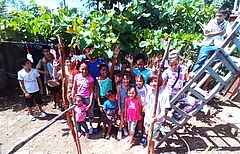
In several Moravian congregations in Cuba, special events were held in the run-up to 13 August, the day commemorating the great reconciliation in the old Herrnhut in 1727. 55 pictures from the ‘Iglesia Moravos Ebenezer’ in Santa Clara here. Videos of the Children's Bible Week in the same community with a wealth of activities can be found here and here. Pictures and videos of the service at the Belén Moravian Church on 10 August 2025 in Havana can be found here and here. There are also 16 pictures from the headquarters of the Moravian Church in Cuba, the Iglesia Morava Bethlehem. See here. Pastor Will Cuthbert from Costa Rica preached. ‘He spoke in the power of the Holy Spirit, who transforms lives, brings joy and destroys evil. The manifestation of the living God could be felt in every life.’ The older youth of the Moravian Church in the Havana district met from 10 to 13 August 2025 for a blessed retreat with Bible studies, personal testimonies and worship sessions with Will Cuthbert. Pictures and a video can be found here and here.
Newsletter of the Cuba Foundation of the Moravian Church, April 2025
The newsletter of the Armando Rusindo Mission Foundation, the Cuba Foundation of the Moravian Church in North America, from the end of April 2025 is available here. The newsletter states: “God is using people of all ages in Cuba to spread the gospel and support one another. Below you will find pictures of worship services, prayers and other gatherings that provide insight into the lives of God's people standing firm in faith - proof that God's light shines in all circumstances.” As the public electricity supply in Cuba is failing more and more frequently, the congregations have created alternative supply systems. Here is a view of the worship room of the Moravian Church Ebenezer in the city of Santa Clara during a power cut. On Sunday, May 4, 2025, communion was celebrated in this congregation.
Prayer requests of the Moravian Church in Cuba
On April 17, 2025, the Moravian Church in Cuba sent the following current prayer requests to its partners in North America. On April 17, 2025, the Moravian Church in Cuba sent the following current prayer requests to its partners in North America: “Please pray a) for the legal transfer of the property of the Moravian Church of Guantánamo to the national land registry; b) for the construction of a church of the congregation of Arroyo Hondo on an already existing piece of land; c) for the purchase of tanks to put drinking water filtration systems into operation; d) for the church leaders in Guantánamo, who will soon begin their studies; e) for the members of the Moravian Church in Cuba and also abroad - for their families, their jobs, their training and their projects; f) for all our sick; g) to ensure that there is a pastor and a leader in every parish district; h) for the construction of a church in Arroyo Hondo. for peace; i) for the purchase of a property in Old Havana, as the congregation there currently has no meeting room; j) for the unity of our church; k) for a ministry car.” Some more prayer requests in English here.
Moravian Church summer camp in Cuba: ‘The treasure of God's love’

The Moravian Church's Summer Camp 2024 for young people from the district of Matanzas (Cuba) ended on Saturday 17 August. A review on Facebook states: ‘The pastor couple Obed and Alay Martinez lean back. They haven't done that for days. They say their last prayer. Their hearts are overflowing with gratitude for the happy faces of the young people, for the help of volunteers from Jagüey Grande, for the money from the Moravian Church's Cuba Foundation. They sigh: So many dear people! They raise their prayers to the God of life for every young person. At the camp they laughed, were full of energy, spoke of the dreams they want to realise, of their aspirations. So much innocence! They gave thanks for over 25 young people between the ages of 12 and 30. The couple were able to accompany most of the young people from an early age, while others joined them later.’ The full report, some videos and 30 pictures here and here.
Greeting by Bishop Armando Rusindo from Cuba
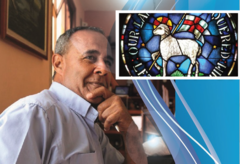
On 25 May 2024, the 27th anniversary of the founding of the Moravian Church in Cuba in 1997, Armando Rusindo, the first bishop of the worldwide Moravian Church to come from Cuba, addressed a greeting to the members of the Moravian Church in Cuba. See in English here. In the greeting, he recalls the small size of the Moravian Congregations in Cuba in the early years and the challenges that had to be overcome in building up the church. He then writes: ‘We were able to achieve important successes and set our goals ever higher. Now there is a real Moravian Church on Cuban soil. The Lord has helped us up to this point. But the passion and dedication of many brothers and sisters who have put their talents, their strength and also their sacrifices at the service of this work have also been important." He then greeted everyone who felt connected to his church. Here is a video and some pictures of the recent dispatch of relief supplies by large container from the USA to Cuba and of the distribution of relief supplies in the Cuban congregations (‘We are not only addressing physical hunger but also spreading the love of Jesus’).
Emergency Aid for Cuba arrives
After heavy rainfall and hailstorms caused considerable destruction in parts of Cuba on 22 March 2024, resulting in crop losses, several fundraising campaigns were launched, particularly in the USA. The Cuba Foundation of the Moravian Church in North America (Armando Rusindo Mission Foundation) has now posted the following information on Facebook: "We are sincerely grateful for the continued financial support and prayers you have given us in connection with the Container of Hope Programme. The first container, destined for the Cuban Council of Churches, has already arrived in Havana. The food and other relief supplies inside have already been distributed." Contents of the container: 20,000 pounds of rice, beans and oatmeal; clothing; medical supplies; wheelchairs; agricultural supplies; three water treatment systems. The next container with relief supplies (value: 25,000 to 40,000 US dollars) is due to follow soon. Further donations are welcome and needed. More on Facebook here.
Pray for the Moravian Church in Cuba
18 April 2024 was the annual day of prayer in the two North American Moravian Church provinces for the Moravian Church in Cuba, a missionary province of the Moravian Church. Among other things, they wanted Intercession for the congregation in Havana ("that we find a place where we can carry out all the activities of our congregation; that we have means of transport for our church; that there are new projects to finance our work"), for the congregation in Matanzas ("that we get drinking water filters for our households; that we are able to provide pastoral care in hospitals and prisons; that our students can complete their studies despite inflation"), for the Villa Clara congregation ("that God gives us leaders with integrity and a pastoral vocation; that we can fulfil our diaconal tasks") and for the Camagüey congregation ("that our community farm flourishes; that we live in ecumenical harmony"). Information on the Moravian Church in Cuba and many other prayer requests in english here.
Cuba hit by a severe hailstorm
The Cuba Foundation of the Moravian Church in North America (Armando Rusindo Mission Foundation - ARMF) announced on Facebook on 24 March 2024: "Dear members! Dear friends! On Friday/Sunday, 22/23 March 2024, Havana and large parts of the country were hit by a long, severe, completely unexpected hailstorm with subsequent flooding, leaving a trail of devastation and causing power outages for hundreds of thousands of people. The damage is immense and our hearts ache for all those who suffered material damage. The images transmitted from Cuba speak volumes about the scale of this disaster. Twelve pictures here. We are gathering more information for you on the current situation and we are waiting for concrete indications on how ARMF can offer its support. In the meantime, let us pray for the people in the city of Havana and in rural areas." A three-minute video here. More detailed metereological data here.
Report: "Moravian Church grows in Cuba"
A few days ago, the church newspaper Glaube und Heimat published an article by journalist Andreas Herrmann. In it, he reports on his trip to Cuba last year, during which he also visited the small, still young Moravian Church in the country. The report in the Blickwechsel section is entitled "Moravian Church grows in Cuba". Many members of the Moravian Church in Cuba live from agriculture. On a Moravian farm in Guantanamo - very close to the US Navy base in Cuba - guayabas, yuca, sweet potatoes and okra pods are grown. The report states: "The educational ideal of the Moravians in particular attracts many, says Armando Rusindo, one of two bishops. However, his colleague Obed Martinez, who teaches at the Moravian Theological Seminary in Matanzas, also points out a difficulty he has to contend with: the shortage economy." To the complete report here.
Consecration of Bishop Obed Erelio Martinéz
On 27 January 2024, Obed Erelio Martinéz from Jagüey Grande will be consecrated as a Bishop of the Moravian Church in the Mission Province of Cuba. He will be the second bishop of the Moravian Church to come from Cuba. The ordinand was first ordained as a presbyter by Bishop Armando Rogélio Rusindo in Havana on 24 April 2022. Obed Erelio Martinéz studied theology at the Seminario Evangelico de Teologia in Matanzas, Cuba.He has been married to the pastor Alay González Rosado since 2004. The couple also hold important honorary positions in their home country: Alay Martinéz serves as secretary in the management of the CCI (Consejo Cubano de Iglesias) and Obed Martinéz as national coordinator of ASEL Cuba (Acción Social Ecuménica Latinoamericana). The statistics of the Moravian Church in Cuba for 2020 state: 132 members authorised to receive Holy Communion; 12 members not authorised to receive Holy Communion; 355 worshippers; 530 friends.
Eastern West Indies
The Eastern West Indies Province has a long Moravian tradition. Here on St. Thomas, the first missionaries began missionary work among enslaved people in 1732. The work expanded to nearby islands. In 1962, the Unity Province became independent. It includes congregations on Antigua, Barbados, St. Kitts, Tobago, Trinidad and the Vergin Islands.
News from this region
Two special Sundays in the Moravian Church on Tortola
The island of Tortola is one of the smaller islands in the Caribbean. Politically, it belongs to the British Virgin Islands. As far as the Moravian Church is concerned, it belongs to the Unity Province of West Indies-East. There is only one Moravian Church on the 19 x 5 kilometer island, namely the Trinity Moravian Church in the beautiful region of Baugher's Bay. The congregation was only established in 1990 and 1993 (first own service) through private contacts with the Moravian Church on the neighboring islands. See here. On September 7, 2025, the congregation commemorated those of its members who were just starting school or were about to begin their studies or training. Pastor Athena Maduro prayed for the new students and blessed them. Some pictures here. Two weeks earlier, several sisters from the congregation, whose ancestors were slaves deported from Africa, proudly presented themselves in their African national costumes. See here.
Chioma Henry introduced as new education pastor in Barbados
With the young Chioma Henry, the Unity Province of West Indies East, specifically in the administrative area of the Barbados Conference, now has a pastor for tasks in the field of education and training. She completed her theology studies at the ecumenical United Theological College of the West Indies in Kingston, Jamaica, and then worked in the St. Kitts Conference. Representatives of the Barbados Conference gathered at Grantley Adams International Airport in Christ Church on August 7, 2025, to welcome the new employee with open arms. Photos here. In a moving introductory speech during a church service on August 10, 2025, Chioma Henry reminded those present that God is faithful and powerful even in the present. She called on people to trust in God amid all their uncertainty in order to find the path ahead of them. The church leadership asks for intercessory prayer for Chioma Henry's ministry.
From the life of the Calvary Moravian Church in Bridgetown, Barbados
- There have been two special events at Calvary Moravian Church in Bridgetown, Barbados in recent weeks. On Saturday, September 21, 2024, new backpacks were given to those students in the Congregation Primary School who are now moving on to secondary school. Some boys and girls were also awarded a scholarship: the Estelle Burke Educational Scholarship Award. Congratulations! Pictures from the event here.
- On Sunday, August 25, 2024, a two-and-a-half-hour, richly designed service with the Moramus Singers of Barbados took place at the same location under the motto Come Let Us Worship he complete service can be experienced here. Singing and instrumental performances by individual groups alternated with powerful congregational singing, as well as with blocks of preaching and prayer.
Two news items from Antigua
The Caribbean state of Antigua and Barbuda, which consists of 48 larger and smaller islands, had proclaimed Thursday, September 12, 2024, as a national day of prayer: a National Convention with God fort he Success of our Land. See here. At 1:30 p.m., there was a march against violence and crime in the city of St. John's, from the Multipurpose Cultural and Exhibition Center zum Antigua Recreation Ground. See here. From 4 to 6 p.m., an intercessory and worship service took place. At the same time, Spring Gardens Moravian Church in St. John's called for children to be registered to attend the congregation's own kindergarten and preschool for the 2024/2025 school year. The institution was founded 30 years ago. The institution is committed to providing a good education and upbringing based on the motto: “We are shaping our children to build the kingdom of God.”
"Brownie Month Service" with flag presentation in Barbados
On the island of Barbados and elsewhere in the Caribbean, female scouts have been called brownies for decades - not without controversy. These groups compete with each other for special achievements. The best Brownies are honoured every month. On Saturday, 15 June 2024, the Brownie Month Service was held at the Calvary Moravian Church in Bridgetown, Barbados, with the presentation of the flags of the Girl Scout groups. Pictures here and here. Rosemary Lynch, Chair of the Board of Elders at Calvary Moravian Church, received the flags carried into the church by the Brownies and placed them next to the liturgy table during the honouring ceremony. + A few days earlier, Cheryl Clarke had been honoured in the church by many people and groups as she retired from her ministry at Grace Hill Moravian Pre-School. Lots of pictures here.
News from the Unity Province West Indies East
- On Mother's Day, 12 May 2024, all congregations in the Unity Province of the West Indies East commemorated the mothers present and the mothers in the world. They received thanks and veneration and were commended to intercession. The Women's Circle of the Nisky Moravian Church on the island of St Thomas also hosted a Pre Mother's Day Praise Breakfast at 8am the day before Mother's Day, featuring live music and a talk by Charlotte Amalie lawyer Everaud Potter. See here.
- The mission work of the Moravian Church in the Caribbean was made famous by the Moravian missionary Christian Georg Andreas Oldendorp (1721-1787), who wrote a book that was read tens of thousands of times and translated several times: "History of the Mission of the Moravian Church on the Caribbean Islands of St Thomas, St Croix and St Jan". The Riksarchiv in Copenhagen has now introduced the missionary and his famous work on its website. See here.
From the Moravian Church in Barbados and Tortola
- The Calvary Moravian Women's Fellowship istaged Jesus' parable of the great supper (Luke 14:15-24) in their church in an impressive way. The depicted feast of the infirm, who accepted the host's invitation instead of those originally invited, culminated in a communal meal in the church. Many pictures here.
- The Sharon Moravian Church had invited to a public testimony march through parts of Bridgetown on 3 March 2024, the commemoration day of the founding of Unity in the spring of 1457 in what is now the Czech Republic. See hier.
- On 14 April 2024, a worship service for young and old took place at Mount Tabor Moravian Church. A photo here.
The Calvary Young People's Society (young congregation) of Calvary Moravian Church invites you to a steel band concert as part of a local music festival for 27 April 2024 at 2pm. See here. - The Moravian Church on Tortola is holding its eighth Sisters' Conference in Baugher's Bay from 3 to 5 May 2024. Invitation here.
History of the Moravian Church on Tortola
The Moravian Church has been working on many Caribbean islands for 200 years or more. Here - on St Thomas (now the US Virgin Islands) - the Moravian mission began in December 1732. On Tortola (now the British Virgin Islands), on the other hand, the work of the Moravian Church only began a good 30 years ago. Eideen A. Smith, the sister who 33 years ago gave the first impulse to found first the Tortola Moravian Fellowship and then the Trinity Moravian Church on Tortola, looks back on the varied first 30 years of her congregation in a newsletter article of the Unity Province West Indies East (November 2023). The congregation has since built its own church. German translation of the three-page article here. The work of the Moravian Church on Tortola became particularly well known in 2017, when the Unity Offering collected worldwide on 1 March was earmarked for the Trinity Moravian Church.
Two Moravians from Antigua cross the Pacific in a rowing boat
In its September 2023 newsletter, the Unity Province of the West Indies East saluted two of its members who successfully completed the two toughest rowing races in the world by boat: the crossing of the Atlantic from La Gomera/Canary Islands to English Harbour/Antigua (Talisker Whisky Atlantic Challenge) and, the following year, the crossing of half the Pacific from Monterey/California to Hanalei, Kaua'i/Honolulu (World's Toughest Row). Both routes were approximately 3,000 miles long. Kevinia Francis and Christal Clashing belong to the Cashew Hill Moravian Church on the island of Antigua. Christal's mother is the congregation's organist. The two members of the Moravian Church undertook the Atlantic crossing in a four-person boat together with Elvira Bell and Samara Emmanuel; the Pacific crossing in a three-person boat with Samara Emmanuel. Samara is the first woman in Antigua with a captain's licence; Christal is a swimming instructor and has also competed in the Olympics. A detailed report on the two ocean crossings in English here (Side 3f).
Great Britain
As early as the 1740s, Zinzendorf had a branch in London. From there, he was able to cultivate the growing international missionary contacts better than in Germany. From this grew various congregations in England and Northern Ireland, which acquired a certain independence early on (in the 19th century). An important branch of the work was the school ministry with some boarding schools.
Today the Province of Great Britain and Ireland is one of the smaller provinces with about 1200 members. It cooperates internationally in the British Mission Board BMB.
News from this region
Without “Windrush,” there would be no Moravian Church in Leicester
Without Windrush, there would be no Moravian Church in Leicester today. This was the consensus in Leicester on Sunday, June 22, 2025, when more than 70 participants celebrated this year's Windrush Day with music, performances, and delicious Caribbean food. All of this brought the community members together in joy and reflection. Windrush Day marks the anniversary of the arrival of the passenger steamer Windrush in Great Britain on June 22, 1948, with the first 1,027 Caribbean immigrants. It provides an opportunity across the country to recognize the contribution of Caribbean immigrants to Great Britain and also to the British churches, including the Moravian Church. Some impressions of Windrush Day in Leicester on June 22, 2025, can be found here (please scroll down). The cultural program was preceded by a contemplative church service. The Moravian Church says: Thank you!
The new multicultural pastor of the Moravian Church in Northern Ireland (Kopie 1)
The leadership of the British Province has appointed the young theologian Kiran Young Wimberly as the new part-time pastor for the Irish district of the Moravian Church. The Moravian Congregation at Gracehill, which was declared a UNESCO World Heritage Site in July 2024 together with Herrnhut and Bethehem/PA, also belongs to this district. The Moravian Messenger of August 2024 (see here) introduces the multicultural theologian. Kiran Young Wimberly is American by birth, but has been living in Northern Ireland for 14 years. The daughter of a Presbyterian missionary and teacher couple, she initially grew up in Japan (Tokyo) and India and became acquainted with various Christian denominations. She later lived in Princeton, New Jersey, where she also studied. She completed part of her theological studies in Jerusalem. She is married to her American Presbyterian husband Alex, with whom she has three children: Eva, Amos and Phoebe.
What is the British Mission Board BMB?
Because there had been repeated confusion regarding its missionary agency, the British Province felt compelled to address the question in the August 2024 Moravian Messenger: What is the British Mission Board? See here (page 97). Unlike the other Moravian mission organisations in Europe, the British Mission Board is not an independent organisation with its own board, nor is it a provincial committee that has emerged from synodical elections. Rather, it is an agency of the province, which is predominantly staffed by members of the church leadership. If necessary, the church leadership co-opts individual persons with special skills, experience and interests for a certain period of time into the board by resolution. The British Mission Board has a special partnership with the Moravian Church in Tanzania (Western Province) and in South Asia (India, Nepal, Myanmar).
Exciting articles in the "Moravian Messenger"
In the Moravian Messenger (July 2024), the magazine of the Moravian Church in Great Britain, three interesting and current reports are published: The two-page cover story by Jane Carter (London), Head of the British Mission Board, is entitled Spring visit to Nepal and Ladakh. Joachim Kreusel, Bishop of the Moravian Church (Ockbrook), also reports on two pages about his recent trip to Tanzania under the headline "Robert Pangani's Consecration as Bishop of the Moravian Unity on Sunday 2nd June 2024". And Pastor Lorraine Shorten (Bath) talks about how she experienced the recent synod in Herrnhut as a guest: "European Continental Province Synod June 2024: Connected". Finally, reference is also made to an upcoming conference: "Called to a process of reconciliation - Reconciliation in our lives, church and the world: 5th - 8th November 2024 in the Komenský Guest House, Herrnhut". Download all articles here.
From the Synod of the British Unity Province in Swanwick
During the Provincial Synod of the British Unity Province from 18 to 21 July 2024 at The Hayes Conference Centre in Swanwick, Derbyshire, all delegates and all synodical guests posed for a group photo. See here. On the morning of 21 July 2024, the new Provincial Elders Conference (PEC) was elected. The result of the elections was as follows: Roberta Hoey, Jane Carter and Michael Newman were each elected to the church leadership for a further four years. David Howarth, Edwin Quildan and Livingstone Thompson will remain in their leadership positions until Provincial Synod 2026. A photo with the members of the church leadership here. A video with animated images from the Synod days here and here. An important topic of the synod was Project 32 on the strategic direction of the province for the years 2022 to 2032. The daily devotions, Bible studies and church services as well as the communal meals and various information and sales stands on the fringes of the synod were also important.
Interview with Hyacinth Christian in the "Moravian Messenger"
The Moravian Church in the UK, which had 971 members in 2021, is largely made up of black people and people of colour who or whose parents immigrated to Europe from former British colonies. One of these members who immigrated from Antigua in 1956 is Hyacinth Christian, who was recently interviewed by the Moravian Messenger. See in English here (Page 7). When asked about her greatest joys, she said: singing in the church choir and in an ecumenical Caribbean choir, visiting the elderly, leading church services and working on the British World Day of Prayer Committee. She cited the following as particular challenges she had to overcome: "I didn't know the history of the Moravian Church. I took part in a lay course despite my limited Moravian knowledge. At the suggestion of Rev Smith and Sister Olive Linyard, I was chosen to be a representative of the Moravian Church on the national World Day of Prayer committee."
Invitation to a Unity day of prayer on January 6, 2024
In view of the current crisis-ridden world situation and with reference to the Unity prayer watch that began in old Moravian Church on August 27, 1727, the Moravian Church in Great Britain has called for January 6, 2024 to be an additional Unity Day of Prayer. Call in English and all kinds of practical suggestions here. Liturgical elements from the Epiphany and mission liturgy here. The appeal states: "We want to consciously place ourselves under God's rule. We want to refresh, strengthen and revitalize the current church with our prayers so that we can be a sustainable church in the 21st century ... Let the day be a day of communal encounter with God and getting to know his view of our reality and problems. It is about - in this order - listening to God and being heard by God. It's about allowing God to change our perspective and the size of our heart (our heart's capacity)."
Special service in Leichester/GB
As a small but global church, the Moravian Church is extraordinarily colourful. The term colourful is often used in a figurative sense: diverse in terms of language, culture, history and theology. Sometimes, however, the Moravian Church is also a colourful church in a very literal sense, such as recently in Leichester (UK), when a coloured sister celebrated the Independence Day of her homeland Antigua and Barbuda with her festive and colourful service dress. See here. The sister's dress is reminiscent of the flag of Antigua and Barbuda, designed by Reginald Samuel in 1966, a few years before independence from Great Britain in 1981. see here. The seven rays of the sun symbolise the beginning of a new era. Red symbolises the blood from the time of slavery and the fiery temeprament of mankind. Blue symbolises everlasting hope. Black symbolises the soil and the omnipresent African heritage. The triad of gold, blue and white symbolises the main attractions of Antigua: sun, sea and sand. Finally, the V symbolises victory. The theme of the Leichester Moravian Church service was: "Power of Art - Beauty of Music - Serenity of Prayer".
Jamaica
In 1754, the Moravian Church began its work in Jamaica. Unlike many other mission areas, the Moravian missionaries were, in a sense, requested by plantation owners. They were to take care of the enslaved Africans. The missionaries were thus more dependent on the European colonizers than in other regions of the world. Through migration, the church experienced a changing time. In 1967 it became a formal Unity Province and thus independent. With about 8000 members, Jamaica is one of the smaller Unity provinces.
News from this region
Small community day at Holy Cross Moravian Church
On Sunday, October 19, 2025, a small community day was held in the Unity Province of Jamaica. The Holy Cross Moravian Church in Santa Cruz, founded in 1984, had invited its neighboring congregations to a Central District Conference Covenant Day Service, which was sometimes lively. See here. Although the Unity Province of Jamaica is a province with many ordained women, young men also seek ordination, as was recently the case with Barnabas Nyirenda. Last August – the spiritual month in the worldwide Moravian Church – the Moravian Women's Fellowship (MWF) in Jamaica invited participants to a three-day retreat at Camp Hope in the island region of Westmoreland. The theme was: “Women stepping up for mission, healing, restoration, and empowerment.” See here. This theme is also the annual theme for 2025 of the Unity Province of Jamaica.
Start of the 2025/26 semester at Bethlehem Moravian College
A video of the three-hour opening and awards ceremony on October 6, 2025, at Bethlehem Moravian College (BMC) in Malvern/St. Elizabeth, Jamaica, is available here. Accompanied by Beethoven's setting of Schiller's Ode to Joy, the college's teachers first enter the auditorium. Then, before the short opening prayer, the two-verse Jamaican national anthem from 1962 (Jamaica, Land We Love) is sung together. The many speeches during the ceremony, including one by Lowel Morgan, the college's chairman, are repeatedly interrupted by performances by various choirs and singing groups. Also present were Barrington E. Daley, president of the Unity Province of Jamaica, Devon Anglin, bishop of the Moravian Church in Jamaica, and several guests from neighboring Moravian communities, ecumenical groups, and friendly colleges in the region.
Bethabara Moravian Church invites you to a special Bible camp
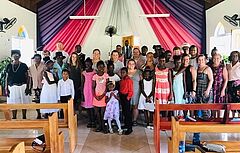
The Bethabara Moravian Church in Manchester (OT Newport) in Jamaica invites children and young people to a Bible camp. They write playfully: "Dive in! It's VBS time (Vacation Bible School)! Get ready for an unforgettable underwater adventure at our VBS 2025! Join us as we SCUBA dive into friendship with God! Here are the details: Date: 4 to 8 August 2025, Time: 9:00 a.m. to 1:30 p.m., Location: Bethabara Moravian Church. There will be fun, games, devotions and lots of surprises related to the sea! Bring your friends and dive into the water with us!" - SCUBA diving is a type of underwater diving in which divers use equipment that is independent of a breathing gas supply at the water's surface, allowing them to dive for longer periods of time. The word SCUBA is an acronym for Self-Contained Underwater Breathing Apparatus. See here.
Invitation to the ‘Provincial Convention 2025’ in Jamaica
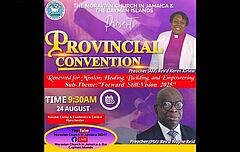
The Moravian Church in Jamaica & the Cayman Islands writes on Facebook: "Join us for the Provincial Convention 2025 of the Moravian Church in Jamaica and the Cayman Islands! The theme of the convention is “New Mission: Healing, Building and Strengthening”. The sub-theme is “Our Vision for 2025: Always Moving Forward!”. The Community Day will take place on Sunday, 24 August 2025, starting at 9:30 a.m. at the Kendal Camp & Conference Centre in Manchester, Jamaica. Come and pray with us as we hear powerful messages from Rev. Karen Kirlew (morning preacher) and Rev. Wayne Reid (afternoon preacher). Can't be there in person? Then visit us online via: YouTube Live, Moravian Church in Jamaica DEMY / Facebook Live, Moravian Church in Jamaica & the Cayman Islands. Let's move forward together in faith and unity!" The invitation poster can be found here.
Two family events at the Bethabara Moravian Church in Mandeville
The Bethabara Moravian Church in Mandeville, Jamaica, invites you to two family-friendly events on July 25 and August 1, 2025. The first event, a movie night, will take place in the church and on the church grounds, while the second event, a so-called Emancipendence Melting Pot, will be held at Bethabara Primary School. The latter event combines the joy of national independence day with an awareness of the need for further development. The movie night is described as follows: "Bring blankets and your best friends! Get ready for a magical night under the stars! Watch Christian films, wave glow sticks, and get into the spirit with snacks and refreshments." More here. The second event will include donkey rides for children, a presentation of old tools, traditional food, and other nostalgic entertainment. The motto: A melting pot of traditional culture, unity, and blessings. More here.
Difficult times for the Moravian Church in Jamaica
The Sunday Gleaner newspaper reported on the difficult situation of many Moravian Churches in Jamaica a few weeks ago. See in English here (further down in the article). Not all congregations offer regular services anymore. In contrast to the Pentecostal churches, the Moravian Church is considered a boring church in the country. Many young people stay away. There is also a lack of money for repairs to the churches. Barrington Daley, the president of the Moravian Church in Jamaica, admitted that the rural congregations were shrinking, but remained hopeful for the future. According to the church constitution, congregations with fewer than 30 members are only considered communities and not full congregations. There are currently twelve such communities - five in Westmoreland, three in Manchester, two in St. Elizabeth, one in St. Ann and another in Clarendon. Like any organization, the Moravian Church goes through a life cycle: sometimes it goes up, sometimes down. He believes that the Moravian Church is currently in a downturn, the church president told the Sunday Gleaner.
Jamaica streams synod opening and "Annual Emancipation Lecture"
The opening service of the recent 78th Synod of the Moravian Church in Jamaica and the Cayman Islands in the Holy Cross Moravian Congregation in Santa Cruz/St. Elizabeth was broadcast on the Internet. See here. The theme of the synod was: Living as God's people in a digital Babylon. - On the occasion of Jamaica's independence from the British Empire on 6 August 1962, the leadership of the Moravian Church once again streamed its Annual Emancipation Lecture. The lecture was given by Lowel G. Morgan, Judge of the Supreme Court of Jamaica, and dealt with the background of slavery and its effects up to the present day. Beginning at 19:30, the lecture tells of the involvement of the Moravian Church in the system of slavery, but also of its contribution to overcoming this system. The complete lecture under the title ‘Freedom come: Understanding Land Rights, Ownership and Estate Planning Considerations in Jamaica ’ here.
Severe devastation caused by hurricane "Beryl" in Jamaica
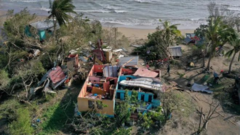
The Board of World Mission in the USA is currently coordinating an emergency relief effort for the victims of Hurricane Beryl, which caused severe devastation in Jamaica in early July. Rev Barrington Daley, President of the Moravian Provincial Board in Jamaica, has reported that while the damage from the storm can be seen throughout the country, the greatest damage is in the congregations of Manchester and St Elizabeth. Church buildings and the homes of Moravian Church members have sustained significant roof damage, and there is still no electricity or access to telephones in much of Jamaica. Together with the Board of World Mission, Herrnhuter Missionshilfe has also made funds available from its emergency relief fund. Donations can be made directly to the USA via this link. Alternatively, donations can also be transferred to Herrnhuter Missionshilfe using the reference Hurricane Beryl (DE25 5206 0410 0000 4151 03).
The "Beaufort Moravian Church" in Westmoreland was built 190 years ago
The Jamaican daily newspaper The Gleaner published a lengthy article on 21 April 2024 to report on the 190th anniversary of the founding of the Beaufort Moravian Church in Westmoreland in the west of the island. Reporter Paul H. Williams explains that the Moravian missionary Johann Heinrich Gottlob was the initiator of the church's construction and his colleague Johann Adam Freibele was the congregation's first pastor. The church was built in 1834 in order to have an outpost away from existing mission stations to look after the former slaves working in Westmoreland. The British Crown's Emancipation Act of 1833 had stipulated that slavery was to end on 1 August 1834. The work of the Moravian Church in Jamaica dates back to December 1754, when the missionaries Zacharias Caries, Thomas Shallcross and Gottlieb Haberecht came ashore on the Black River near St Elizabeth.
Latina Bromfield-Robinson on the best list for the third time
In March 2024, Latina Bromfield-Robinson was on the Principal's Honour Roll of apprentices at Bethlehem Moravian College (BMC) in Malvern/St. Elizabeth, Jamaica, for the third year in a row. The student received an award for this unprecedented achievement from Claudene Blythe-Miles, Deputy Principal, at the Annual Awards Ceremony on 15 April 2024. Congratulations to you! One photo each of the 2024 award here, 2023 here and 2022 here. Latina Bromfield-Robinson is preparing to become a teacher. Back in 2014, the BMC concluded a trilateral agreement with the Teacher’s Colleges of Jamaica and the University of the West Indies, which authorises the BMC to independently award a Bachelor of Education degree. In November 2015, the first cohort of students achieved this degree.
200 years ago: Primary education in Jamaica began with the Moravian Church
The Ministry of Education in Jamaica recently marked a milestone anniversary at the Lititz Moravian Congregation in St. Elizabeth: the Bicentennial Celebrations of Primary Education in Jamaica 1823-2023. Nevadeene Gallimore Miller, a director in the Ministry of Education, thanked the Moravian Church for its contribution to the development of national primary education. This began 200 years ago with the opening of the first elementary school for slave children in what is now St. Elizabeth. The pioneering work of the former Moravian missionaries is indelibly anchored in the minds of the country's educators. To this day, the Moravian Church is an important partner of the Jamaican state in the transformation of the education system. Today, there are 33 elementary school in Jamaica that are affiliated with the Moravian Church. To a longer newspaper article in The Gleaner here.
"Maidstone Museum" in Jamaica tells the story of slave emancipation
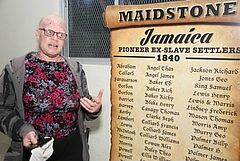
Every fall, the Maidstone Museum in the northwest of Manchester (Jamaica) offers special tours for schoolchildren. During these tours, the children learn about the history of the liberation of slaves of African descent in Jamaica. The museum - opened in 2015 - houses hundreds of artifacts used by slaves and slave owners in the 19th century. The former coffee plantation Maidstone, also known as Nazareth, developed under the influence of the Moravian Church into one of the oldest free villages in Jamaica. The museum displays, among other things, a list of the names of the Jamaican pioneer slaves, the first slaves to become landowners after their liberation. The Nazareth Moravian Church (1834, new building 1890, National Heritage Site), the churchyard of the Moravian Church, the ruins of an old slave hospital and Trial Hill, the place of trial and execution for slaves, are also located in the vicinity of the museum. Watch the video of museum curator Ava Frith hier. Article from The Gleaner newspaper hier.
Labrador
Labrador is already an old mission area. After an attempt was broken off again in 1752, the possibility arose in 1771 to establish a mission station permanently on the coast. The Moravians had experience with Arctic conditions since 1733, when they founded Neuherrnhut on Greenland.
As in the other Arctic regions, the church grew slowly and established mission stations along the coast. The change from the widely scattered hunting society of the Yupik, in which the "catcher" played a central role in family and society, to a westernized society with larger settlements for schools and hospitals brought a variety of problems that are only slowly being worked through. The church has accompanied the change.
After Labrador became an independent Unity province in the 1960s, its own forces were too weak to manage leadership, organization, theological education and some other things on its own. Therefore, in 2002, Labrador applied to be classified as a mission province and has since received support from the America North Province.
The church headquarters are located in Happy Valley-Goose Bay.
Pictures Labrador
News from this region
260 years ago in Labrador: Mikak comes into contact with the Moravian Church
In the summer of 1765 – 260 years ago – Mikak, a married woman and mother from the Inuit people, came into contact with two Moravian missionaries, Jens Haven and Christian Drachart, who had been working for some time to establish a mission station in Labrador. When Mikak's husband was killed in a battle with the British in 1767, she traveled with her son Tutauk to London in 1768, where she befriended the German-born princess Augusta of Saxe-Gotha-Altenburg and spoke to the British authorities on behalf of the Moravians, asking them to allow the Moravian Church to begin missionary work in Labrador. Returning home, she was involved in founding the mission station in Nain, which still exists today. However, her criticism of the missionaries' strategy and a decision by lot prevented her from being baptized, so she increasingly turned away from the Moravians and finally died unbaptized in Nain on October 1, 1795, after many trials and tribulations. An article by Arkis expert Kenn Harper in the blog Taissumani can be found here in German translation.
Lots of information on Labrador/Nunatsiavut
A new website contains a wealth of information about Canada's northern regions and the lives of the indigenous peoples there. The website is called Indigenous Peoples Atlas of Canada, it also provides information about the Nunatsiavut region, formerly called Labrador. See here. On these websites there are repeated references to the Herrnhut Mission (historical and current pictures, maps), which began in Nain as early as 1771. Important keywords on the website include: Early History, Colonialism, Family Structures, Adoption, Traditional Clothing, Housing, Urban Inuit, Health, Inuktut writing systems, Place Names, Wildlife, Permafrost, Sea Ice, Climate Change, Education, Inuit Games, Visual Arts and Performing Arts and Music. There used to be eight Moravian Church mission stations in Nunatsiavut. Today there are still assemblies in Nain, Makkovik, Hopedale and Happy Valley (Goose Bay). Behind the website is a book that is available for 99.99 US dollars. See here.
Missionary graves in the cemetery in Hebron, Labrador
The “Newfoundland and Labrador Genealogical Society Inc.” published a list of the missionary graves in the cemetery of the abandoned mission station Hebron, Labrador, existing from 1818 to 1959. See attached! From here came the famous Iniut Abraham Ulrikab and his family members, who - baptized by Herrnhut missionaries - were exhibited together with other Inuit in zoos in half of Europe in 1880/81 at a large ethnic show and all died and kept a handwritten diary of their suffering. The corresponding book Abraham Ulrikab at the zoo here. Because the name Labrador is reminiscent of the early Portuguese conqueror João Fernandes Lavrador (1443-1502), it has been shunned by the indigenous people for several years. They now call their land Nunatsiávut (Our Beautiful Land) again, as they used to.
Benefit Singstunde for the Moravian Church in Labrador
Chris Giesler, a bishop of the Moravian Church from the North American North Province, has reached retirement age. To mark the occasion, a benefit Singstunde will be held at Emmaus Moravian Church in Emmaus, PA, starting at 6 p.m. on October 5, 2024. At this gathering, the bishop and members of his family and friends will perform a musical program. The invitation reads: “Come sing, listen to God's word, pray, and contribute to a project that supports the Moravian Church in Labrador. The money raised will be used to buy books and daily watchwords for our brothers and sisters there.” See here. The watchwords for Labrador, Newfoundland, the Northwest Territories and Nunavut (all in Canada) are available in the indigenous language Inuktitut. This language is currently spoken by about 34,000 people. Since 2012, there has been a language institute in Iqaluit/Baffin Island.
From the Labrador Synod
Synod 2024 was recently held in the Labrador Mission Province of the worldwide Moravian Church. The synod members gathered in Happy Valley-Goose Bay. Despite a late start to the Synod due to bad weather on the coast and cancelled flight connections, Synod delegates were able to complete their work on 25 May 2024 as planned. Sarah Jensen was re-elected as chair of the church leadership. The Board of World Mission was represented at the synod by Chris Giesler, Director of Practical Missions. He led workshops on the history of the Moravian Church and the Moravian Guide for Biblical Interpretation. The Labrador Mission Province currently only includes (from north to south) the four small, mostly very remote congregations of Nain, Hopedale, Makkovik and Happy Valley-Goose Bay. Two pictures from the synod here.
Gold, copper and nickel finds near Hopedale in Labrador
Geological explorations that have been ongoing since 2020 have revealed that there are mineable gold, copper and nickel deposits in the ground in the hinterland of the former Moravian mission station Hopedale (Labrador). This has now been announced by Labrador Gold Corp. At the end of 2023, the company exercised the option to acquire 100 per cent of the four mining licences granted, which cover a total of almost 700 claims. The large Hopedale mining area extends over 43 kilometres along the Florence Lake Greenstone Belt. Roger Moss, President of Labrador Gold Corp, sees considerable potential for further major discoveries in the now contractually secured mining area. He thanked the Department of Natural Resources of the Province of Newfoundland and Labrador for their financial support in the exploration of the concession area under the 2023 Junior Exploration Assistance Programme. More here. It remains to be seen what the start of mining will mean for the highly sensitive Arctic environment and for the people in the Moravian Church of Hopedale.
Find in Nain, Labrador: 1,500 sheets of handwritten music
In Nain, Labrador, a former mission station of the Moravian Church, founded in 1771, more than 1,500 sheets of handwritten music were discovered, some of which date back to 1810. This was reported by the Canadian Broadcasting Corporation. The Canadian musicologist Tom Gordon described the sheet music found as jewels: "Great choral pieces - parts for the choir and parts for the orchestra - all in Inuktitut," he marvelled. Because the music he found differs from older music found in Nain in terms of compositional style and arrangement, Tom Gordon assumes that it was written in the mission station Okak, which is located further north and no longer exists, especially as some of the works are signed by the Inuit organist Jeremias Sillit, who worked mainly in Okak. "If it turns out that the majority of the music comes from Okak, then this will add considerable value to the find," emphasised Tom Gordon.
Prime Minister's request for forgiveness from Inuit in Hopedale and Makkovik
"As Premier and on behalf of the people of Newfoundland and Labrador, I apologise for all that has been done to school children, families and all Inuit in Labrador. I am sorry that the Government of Newfoundland and Labrador allowed crimes to happen and that they did not step in to protect the children who should have been protected." This is what Andrew Furey, the Premier of Newfoundland and Labrador, Canada, said to the residents of Hopedale and Makkovik on Thursday, 2 November 2023, during the third of six promised visits to Labrador. Inuit Toby Andersen from Makkovik, who was forced to attend a government residential school at the age of 12, accepted the apology on behalf of the residents of the semi-autonomous Inuit region of Nunatsiavut. However, this is only the first step towards reconciliation. Material compensation must follow. For example, there is still no doctor in Makkovik. Only three times in four years has a doctor from distant St John's been to Makkovik. - To a large English-language article by CBC News with reports from the former Herrnhut mission stations Makkovik and Hopedale here.
London: New gravestone for Sara Ubraha Uvloriak from Labrador
There is an Inuit grave in the Moravian Church churchyard in London-Chelsea which until recently had a small stone on it with the inscription: "En Eskimo Child, departed 1900". It was later discovered that this was the grave of Sara Ubraha Uvloriak, who had arrived in London shortly before her death as one of more than 30 Inuit who had been "exhibited" in Paris on the occasion of the "Games of the Second Olympiad 1900". Although the Moravian Church had not initiated this exhibition, many of the Inuit "on display" belonged to the Moravian Church or were connected to the Moravian Church mission. Therefore, the Inuit child who apparently died on the "return transport" was buried in the churchyard of the "Fatter Lane Moravian Congregation" in London-Chelsea. On Friday 29 September 2023, members of the Moravian Church in London gathered to lay a new gravestone on the old grave, on which the name and exact dates of the life of the child who had gone home are engraved. More here.
Canadian Prime Minister Justin Trudeau visits former mission station Nain
Recently, Canadian Prime Minister Justin Pierre Trudeau and his son Hadrian visited the former Moravian mission station of Nain (founded in 1771) for the first time, as reported by the Aboriginal People's Television Network on National News. See here. "Since 2015, I have invited the prime minister to my homeland," said Natan Obed, chief representative of 60,000 Inuit in Canada, in his welcoming speech, calling the presidential visit very significant. They talked about weapons, fishing and hunting, about the health of the Inuit, but also about reconciliation between white Canadians, whose ancestors trampled on the rights of the indigenous people for centuries, and today's Inuit. A video of the presidential visit, which was also attended by Johannes Lampe, President of the Autonomous Iniut Region of Nunatsiavut. The implementation of the "United Nations Declaration on the Rights of Indigenous Peoples" was also on the 14-point list of issues.
Mission areas
Mission areas are currently Angola, Belize, Congo/Eastern Sud Kivu, French Guiana, Garifuna, Haiti, Kenya, Peru, Rwanda, Sierra Leone, Tanzania/Lake Victoria, Tanzania/Central South, Uganda, Zanzibar.
News from this region
Gradual growth of the Moravian Church in Kenya
In Onward, the mission magazine of the North American South Province (No. 3-2025), missionary Michael Tesh reports on the gradual growth and consolidation of the Moravian Church in Kenya. Among other things, he writes: “In July 2025, Pastor Samuel and I spent two weeks in Ikutha to establish a new congregation.” By God's grace, we were able to minister in twelve different homes, and two families now belong to the new congregation. It was physically demanding because of the long distances, but the weather was cooler than last time. We also held two film events in Ikutha. On the first Saturday, we showed the Jesus film, and on the second Saturday, we showed the film about Moses and the Red Sea. Each event attracted about 100 people, and before the film screenings, we shared the Word of the Lord. We also visited two schools. Once we told the children about David and Goliath and told them that God helps them overcome challenges and fears. The other time, we told the story of Jonah and taught the children to listen to God's voice and follow His call.
Update from Michael and Cecilia Tesh on the Moravian Church in Kenya
Michael and Cecilia Tesh send greetings from Kenya. They write in the magazine Onward (July 2025): It is the rainy season here in Kenya. We are planting corn and other crops. All the children are currently in school. They will be there until the first week of August 2025. Here is an update on the situation of the Moravian Church in Krenia. Pastor Samuel and I have been traveling to Ikutha every month since the beginning of the year. In the first week of May, we were only there for three days. We had to talk to the pastors and tell them to focus on one congregation and strengthen it. We had noticed that there were many congregations but hardly any members. Now when we go there, we can devote our attention to one congregation. We plan to go to Ikutha for two weeks in June. We need to live with the people there for a longer period of time and pray with them. We will also visit schools and preach God's Word to the children.
Since June 1, 2025, there has been a second Moravian Church in Brazil (Kopie 1)
The Board of World Mission of the Moravian Church in North America announces: "On June 1, 2025, a group in Lauro de Freitas, just outside the city of Salvador, officially joined the Moravian Church in Brazil. This marks the founding of a second Moravian Church in the country. There was also a baptism during the founding celebration. On June 7, 2025, the members gathered for a communion service, an hour marked by deep spiritual fellowship. On June 13, 2025, the members of the new Lauro de Freitas congregation met with the members of the Salvador congregation for coffee. It was a time of shared joy and encouragement. The relationship between the two congregations is expected to continue to grow and deepen. Pastor Mauricio Melo said, “We believe that God will do even greater things among us.” Some pictures from the meeting room of the Moravian Church in Lauro de Freitas can be found here.
Information on the Moravian Church in Uganda
After Joachim Kreusel, Bishop of the Moravian Church from Ockbrook/GB, had asked in Uganda how things were going with the Moravian Church there, he received the following reply: "Dear Brother Bishop! Thank you very much for your inquiry about the Moravian Church in Uganda. Below is a description of our ministry. With over 500 members, the Moravian Church in Uganda is growing. Despite several challenges, the church is faithful to its mission. Our congregations are located in the central region in the districts of Mukono, Buikwe, Kayunga and Buvuma. There are currently ten congregations with four ordained pastors. Only one congregation has a permanent church building. The remaining congregations fellowship in temporary buildings, rented classrooms, private homes and under trees. The biggest challenge is the lack of land for most congregations. But we hope that God will provide for us. Please convey my greetings to your congregations and pray for our ministry. Peace be with you! Rev. Julius Mubiru, Chairman of the Board of the Moravian Church in Uganda, P.O. Box 993, Mukono, Uganda, phone: +256779068517.
From the Moravian Church in Burundi
The Moravian Church in Burundi announced on Facebook on May 23, 2025: The president of our church, Edward Augustino Nsengiyumva, and the person responsible for women's and children's ministry, Chantal Bakamiriza, are flying to Denmark today where they will attend a church meeting. The church leadership asks for prayers for the travelers and for the church they represent. See here. On May 22, 2025, the leadership of the Moravian Church in Burundi visited the congregation in Bujumbura under the leadership of Pastor Manace Irutingabo. Together they visited the building site for a church in Kirekura. The church leadership announced that the construction preparations were well advanced and had reached an interesting stage. The official start of construction is planned for July 27, 2025. Prior to this, there will be a house-to-house evangelization in the surrounding villages on 26 July 2025. More here.
The Moravian Church in Brazil is growing in all directions
The Moravian Church in Brazil is growing in all directions The Board of World Mission reports: The Moravian Church in Brazil is steadily expanding its presence, guided by a long-term vision based on witness, community service, and intercultural mission. It has already celebrated baptisms, held outdoor evangelistic services, and organized transformative meetings for men and women. Its commitment includes support for addiction, distributing food donations, and events for children. The church has also sent its first intercultural missionary to Bolivia. And it plans to evangelize indigenous communities in the Amazon region. There are also plans to establish a theological seminary and build health facilities. In all of this, the Moravian Church in Brazil is concerned with spiritual growth so that it can be a faithful servant of Jesus Christ.
Day of prayer for the Moravian Church in Sierra Leone
The Moravian Church in Sierra Leone, headquartered in Luawa Yiehun, works as a mission area of the worldwide Moravian Church. When a long civil war in the country came to an end in the 1990s, the first church structures were established there with the help of the Moravian Church in the USA. Now, under the leadership of Akoluthin Safiatu Braïma, there are five congregations with social and educational projects, including a Moravian Secondary School with around 800 children in Yiehun. The congregation in Kailahun is in the process of building a junior secondary school. The congregation's governing bodies meet four times a year to exchange ideas and receive further training. A 16-part Bible knowledge and spiritual leadership course is currently underway. New church leadership elections were held in Sierra Leone at the end of April 2025. Prayer requests from Safiatu Braïma can be found here, sent on the occasion of the Day of Prayer for the Moravian Church in Sierra Leone on May 4, 2025.
Prayer requests from the Moravian Church in Peru
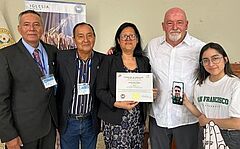
On the occasion of the Day of Prayer for the Iglesia Evangélica Morava En Perú on 15 August 2024, proclaimed by the Board of World Mission BWM of the Moravian Church in North America, new prayer information from the country is available on Facebook. See here. It says, among other things: Pray for: ‘the physical health of our pastors, for the registration of the church with SUNARP (Superintendencia Nacional de los Registros Públicos), for growth in the Moravian Church in Peru, for the pastoral leadership of the Moravian Church in Peru, for Unity among women, for wisdom in the fulfilment of God's will, for the congregation ‘El Admirable’ in Zaña and its evangelisation work, for overcoming the political problems in Peru, for an end to corruption in both the executive and legislative branches of Peru, for the eradication of violence against women, for our participants in the meeting of the ‘Unity Women's Desk’ UWD in Winston-Salem/NC’.
Prayer day for the Moravian Church in Brazil
The Board of World Mission (BWM) of the Moravian Church in North America recently proclaimed the third Thursday in March as aday of prayer for the Moravian Church in Brazil The Iglesia Morava has penetrated northern Brazil through the activities of brothers and sisters in Suriname. In 2020, Br Mauricio Melo approached the BWM with the question of what needed to be done so that an independent Moravian Church could be established in Brazil. He and his wife Jucineide then took part in the Spanish-speaking Moravian Resources Conference 2022 in Panama. Since then, the couple have joined other Moravians in Central and South America in a weekly Bible course that takes place online and is led by Will Cuthbert from the Moravian Church in Costa Rica. In 2023, the Unity Synod in Cape Town authorised the establishment of the Moravian Church in Brazil as a Prospective Mission Area. There are currently around 50 members of the Moravian Church in Brazil. Under the link above you can also find specific prayer requests in English.
From the "Ray of Hope School" in Kenya
In their last newsletter in 2023, Michael and Cecilia Tesh greeted us with their daughter Bessing, who have been working for the Moravian Church in Kenya for a decade. Together with the Kenyan John, they are responsible for the Ray of Hope School near the country's capital Mombasa, among other things. They write: "The Lord has been faithful to us as a family. We were able to harvest seven 90kg bags of maize from our garden. We will use it to help other needy people. It will also save us a lot of money, as maize is one of the staple foods in Kenya. The price of maize has risen sharply. We are grateful for all the rain ... Things are going well at the Ray of Hope School. It now has four classes. We are praying that more and more children will attend the school and that we will be able to add a fifth class in 2024. A congregation in Turkana organised a Christian camp in Mombasa. The Ray of Hope children were able to attend the camp."
Ecumenical Sisters Meeting in Brazil
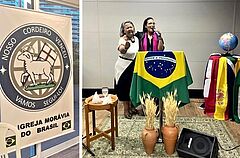
One of the youngest branches in the tribe of the worldwide Unity has been the Moravian Church in Brazil since 2020. It is supported primarily by the Moravian Church in Peru and in North America. A recent communication from the Board of World Mission states: "Our brothers and sisters in Brazil share the Gospel of Jesus Christ in a variety of ways in their growing community. In July 2023, they hosted an ecumenical women's meeting, inviting women from many denominations: for prayer, discussion and personal sharing." Three pictures from the meeting here.
Mission History
The Moravian Church has been a missionary church from the very beginning. This is the only reason why the worldwide Moravian Church exists today. In the course of its almost 300-year history, many hundreds of Europeans have gone to different regions of the world to spread the good news. They did not carry the Gospel alone, but usually also their European culture, ethics and history. The European influence often did a lot of good, for example, schools and hospitals were built. However, missionaries also kept slaves themselves or sent bones and skulls to Europe for "scientific" purposes.
The Moravian Church also wants to face these dark sides of mission history.
News to Mission History
Deutschlandfunk visits the Moravian Church communities in Amsterdam and Zeist
On the morning of July 23, 2025, Deutschlandfunk, Germany's most listened-to radio station, broadcast a lengthy report on its program “Tag für Tag” (Day by Day) on how and with what success the Moravian Church is coming to terms with its history of mission and slavery. In this context, the station also visited the Moravian Church in Amsterdam and interviewed Johannes Welschen, a member of the Unity Directorate, in Zeist, Netherlands. The visit was prompted by Keti Koti 2025, the 162nd anniversary of the abolition of slavery in the former Dutch colony of Suriname, which is now also celebrated annually in the Netherlands. The report pays tribute to what the Moravian Church has been doing for more than 15 years in the field of historical sciences and in the interpersonal sphere to overcome the consequences of slavery, which are still clearly visible in many parts of the world, both rich and poor, and to bring about reconciliation. In the interview, Johannes Welschen does not hide the fact that there are still many steps to be taken before true reconciliation can be achieved. Listen here from minute 13:45.
125 years ago: Transfer of the Greenland Mission to the Danish Church
On August 5, 1900 – 125 years ago – a large festive service was held in Lichtenfels on Greenland to mark the handover of the Greenland Mission of the Moravian Church to the Danish Lutheran State Church. This transfer had been decided in 1899 by a synod of the Moravian Church for financial and political reasons (ongoing conflicts between Denmark and Germany over the border demarcation) by a vote of 47 to 2. On March 3, 1900, Danish King Christian IX had already received the Greenland mission president Adolf Riedel (1845-1918) in audience and thanked the Moravian Church for its 167 years of work in Greenland. Forty large boats and 212 kayaks carrying more than 800 Greenlanders (one third of the entire Inuit population of South Greenland!) arrived in Lichtenfels for the above-mentioned farewell service for the Herrnhut missionaries. On September 11, 1900, the last Herrnhut missionaries boarded a Danish ship with their few belongings. The Danish king financed the missionaries' return journey.
Historical commemoration in the Netherlands: 80th anniversary of the death of Anton de Kom
On April 24, 2025, the Netherlands and Suriname commemorated the 80th anniversary of the death of Anton de Kom (1898-1945), a Surinamese writer who fought against colonialism with his pen and his actions and was also active in the resistance against Nazi Germany. In 1934, he published his book We, the Slaves of Suriname, an indictment of the colonial system and the very first history book about Suriname written by a Surinamese author. To this day, the book opens people's eyes to how power, violence, and inequality were perpetuated. During the German occupation of the Netherlands, Anton de Kom joined the resistance. He wrote for an underground newspaper, which cost him his freedom and his life. He was arrested, deported, and died on April 24, 1945, in the Sandbostel concentration camp, a branch of the Neuengamme concentration camp. It was not until 1960 that his body was identified in a mass grave. More here and here. His daughter Judith de Kom fought to have the injustice done to her father recognized. In 2023, the Rutte cabinet apologized to Anton de Kom's family.
Discussion about Denmark's colonial and slavery past
In Denmark, much is currently being done to come to terms with the country's involvement in the colonial system and to bring the crimes of the age of slavery to light. Denmark owes its flourishing as a nation state and its economic prosperity in the 18th century in large part to colonialism. The public broadcaster DR has already broadcast several documentaries about Denmark's past as a global colonial power. In view of this fact, Jørgen Bøytler from Christiansfeld, the Unity Board Administrator, emphasized in a podcast moderated by Svend Løbner and produced by Michala Linn (listen in Danish here) that the Unity Synod passed a resolution in September 2023 acknowledging grievances caused by Europeans and asking for forgiveness. Although the Moravian Church had sometimes ransomed slaves and provided slaves everywhere with basic educational goods, it had also owned slaves itself at times.
John Heckewelder, a Moravian missionary as proto-ethnologist
In the anthology Transculturality. Gender- und bildungshistorische Perspektiven, ed. by Wolfgang Gippert et al. (transkript Verlag Bielefeld), the Pietism and Moravian Church researcher Pia Schmid, professor at the University of Halle/Saale, publishes an 18-page essay on Moravian Church mission in North America in the 18th/19th century. The essay is entitled: John Heckewelder's 'History of Indian Nations' (1819). A missionary as proto-ethnologist. The essay can be read online here (page 105ff). Pia Schmidt shows how the Moravian missionary John Heckewelder, a student of David Zeisberger, endeavoured to awaken understanding among his white readers for the differences in the customs and traditions of the indigenous peoples of North America. John Heckewelder does this, for example, in his comments on scalping, a custom that seems particularly cruel and senseless to Europeans, but which makes perfect sense in the culture and warfare of the Native Americans.
Reappraisal of missionary history
- Issue 12-2024 of the widely read magazine Publik-Forum contains an article by Johann Hinrich Claussen, Berlin, the EKD's cultural representative, on the Moravian Church's first picture. The article combines an appreciative look at this picture with critical comments on the circumstances that contributed significantly to its creation. Listen to the article here.
- Several webinars organised by Mission 21 in Basel, an organisation to which the Herrnhut Mission in Switzerland also belongs, are dedicated to the actions of Christian missionary societies in the context of slavery and colonialism. It examines historical points of contact between Christian missions and racism and discrimination. With the eleven webinars, Mission 21 makes it clear that the transparent and scientific reappraisal of missionary history is one of the organisation's most important concerns. To the eleven webinars here.
Zinzendorf as slave owner
Back in 2021, a lengthy essay by Dr Josef Köstlbauer from the Center for Dependency and Slavery Studies at the University of Bonn was published in English in an anthology, which deals with the actions of Nikolaus Ludwig von Zinzendorf and his wife Erdmuth Dorothea as slave buyers and slave owners. As the essay has received little attention in Germany to date, it has now been reviewed by Andreas Tasche and its two most important sections (two case studies) have been translated into German. The essay is entitled: 'I Have No Shortage of Moors! Mission, Representation, and the Elusive Semantics of Slavery in Eighteenth-Century Moravian Sources. It is striking how ruthlessly the count and countess behaved towards their personal slaves and how they asserted their property rights with all vigour when they "escaped" - right up to the King of Denmark! - asserted. It makes us wonder why the presence of enslaved people was apparently taken for granted in the Moravian Congregations Herrnhaag, Herrndeijk, Zeist and Barby. To the review here.
Herrnhut missionary brought skulls from South Africa to Germany
On 15 February 2024, the Sächsische Zeitung reported in a full-page article by Thomas Ruhland that, with the help of Herrnhut missionaries, at least one human skull came from the South African mission station Shilo via the Genadendal station to Herrnhut for research purposes and was later sold - together with 27 other skulls - to the skull collector Hermann Welcker in Halle/S. See here. A total of 831 human skulls are still stored in the Meckelschen Sammlungen in Halle: the skull of Caffern Mqhayis from Shilo in a display case. The skull bears the inscription Coll. Becker; this refers to Carl Joseph Becker, a doctor in Herrnhut, whose son Woldemar later completed a doctorate on the skulls of indigenous people. In Herrnhut, the journalist was given the desired access to the Unity Archiv and also to private ethnological collections. The Moravian Church is pleased about the ongoing research into the darker chapters of its mission and supports it.
Unity Womens Desk
The Unity Women's Desk (UWD) coordinates and promotes women's work worldwide. The office, headed by Julie Tomberlin, is located in Winston Salem, North Carolina. The UWD conducts intensive fundraising, generating funds primarily for scholarships for women worldwide.
News of Unity Womens Desk
All the things you can donate...

The Unity Women's Desk (UWD), headquartered in Winston-Salem, NC, posted on Facebook: "Do you have any spare wool sweaters or wool yarn? Then donate your wool to the UWD! We ask for pure wool, not ‘superwashed’. All donated wool will be reused for handicrafts for our Moravian Global Market. Or do you have nail polish sitting in one of your drawers, gathering dust because you don't use it? Then consider donating your nearly empty nail polish to the UWD. We use donated nail polish to create painted artwork for our Moravian Global Market, such as colorful pumpkins! If you would like to send us leftover wool or nail polish, please contact the director of our organization, Julie Tomberlin, by email (julie.unitywomen@gmail.com) or by phone (336 575-8577). See here and here.
Rachel-Juliana Matthew Lwali has passed away in Tanzania
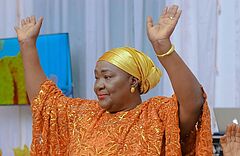
The Unity Women's Desk (UWD), based in Winston-Salem, North Carolina, announced on 19 August 2025: "It is with great sadness that we share the news that our dear sister and member of the UWD Advisory Board, Rachel-Juliana Matthew Lwali, has suddenly passed away. We are grateful for every day of her life and for everything she did for girls, women and the Moravian Church. We know that she is resting in peace with her Saviour. Please keep her family and all those who mourn her death in your thoughts. Rachel was surrounded by her beloved family when she died unexpectedly." See here. Rachel Lwali was also a member of the Council of the Teofilo Kisanji University of the Moravian Church in Mbeya in Tanzania's South-Western Province and represented the Moravian Church in Tanzania at many conferences at home and abroad. She had a degree in Banking and Financial Support Services and worked for 30 years in a Tanzanian bank. She is survived by seven children and many grandchildren. See here.
Transporting obstetric kits in large travel cases
A good idea recently emerged at the Unity Women's Desk in Winston-Salem, North Carolina. Because the cost of transporting small but important obstetric kits to women's organizations and hospitals of the Moravian Church in Central and South America, the Caribbean, and East Africa is disproportionately high, volunteers will transport them to their destinations in their personal luggage. The Unity Women's Desk is asking for spacious, unused suitcases with wheels that can hold about 30 obstetric kits. The suitcases will be packed and stored in Bethania near Winston-Salem until the group trips begin. The contact person is Julie Tomberlin, director of the Unity Women's Desk (julie.unitywomen@gmail.com). To donate, click here. There is a list of the nine items that are usually included in a birth kit. See here. More about the Birthing Kits here.
Introducing: UWD scholarship recipient Ibenathi Bhaku
Once again, the Unity Women's Desk (UWD), based in Winston-Salem, North Carolina, is introducing one of its scholarship recipients on Facebook: Ibenathi Bhaku from East London, South Africa: "Overcoming barriers and radiating grace is what Ibenathi Bhaku does. She is studying systems development in her home country. She believes that you can do three things at once: achieve technological excellence, be creative and beautiful, and remain rooted in your faith. In conversation with a UWD intern in the US, she said: 'I am deeply grateful for being awarded a scholarship. It is helping me to expand my skills and prepare for a career in the technology industry. The current semester, in which I had to learn new computer languages and write challenging software, was a big challenge. Thank you for supporting young learners at UWD and sharing their life stories to inspire others." More here.
From scholarship recipients to supporters
The Unity Women's Desk, based in Winston-Salem, North Carolina, wrote on Facebook on June 6, 2025: "US$1,000 provides a one-year university scholarship; US$500 provides a one-year secondary school scholarship. In some countries, this amount covers most personal expenses for a year. In 2024, 33 of our scholarship recipients successfully completed their studies with their graduation! One of them is Nicole Lerians from Honduras. See here. Congratulations, sister, and to all the other sisters from North Carolina to South Africa, from Nepal to Honduras." The Unity Women's Desk points out in this context that its former scholarship recipients have committed themselves to working at least ten hours per year for free after completing their studies, tutoring other young women, helping with career guidance or job applications, etc. Four such graduate volunteers can be seen here.
“Unity Creed” – a new statement of faith for women presented by the Moravian Church
A Unity Creed was written in Spanish by two female pastors of the Moravian Church in Cuba and translated into eight other languages for publication. With its focus on Jesus' treatment of women and on the feminine characteristics of God, the Unity Creed was described by its authors as a women's creed. The publication of the 14 verses of the creed was accompanied by images by Gail Morris (USA) and brief information about those involved. The main motive for writing the Unity Creed was to combat domestic violence and empower victims of such violence. The Unity Creed is deliberately kept short so that those affected can easily memorize its content. A printed version of the Unity Creed, a powerful and impressive literary work that opposes misinterpretation of the Bible, is available from the Unity Women's Desk in Winston-Salem. See Facebook here.
5th Unity Women's Consultation rescheduled for 2026
After the 5th Unity Women's Consultation, which was supposed to take place in North Carolina (USA) from June 1 to 6, 2025, had to be canceled at short notice due to visa problems for the participants, a new location and a new date have now been found. On May 26, 2025, the Facebook page of the Unity Women's Desk posted: "Good news! We are grateful to our Tanzanian sisters Rachel and Fatima for taking the long bus ride from Dar es Salaam to Arusha to meet the local team preparing the rescheduled 5th Unity Women's Consultation. The consultation will now take place from February 1-6, 2026 in Arusha, Tanzania." The planned theme of the consultation is expected to remain the same: With Hearts and Hands and Voices: Advocating for Girls and Women in and through the Moravian Church. Three photos from Arusha here.
The “Unity Women's Desk” introduces: Zilpa from Tanzania
The Unity Women's Desk, headquartered in Winston-Salem, NC, posted the following on Facebook on March 3, 2025: “In 2024, we were able to distribute over $73,000 worth of scholarships to the worldwide Moravian Church. One of the most recent scholarship recipients was Zilpa from Tanzania, who earned a Masters in Education from Uganda Christian University We wish Zilpa that she gets a job in her profession. She has worked so hard for her degree. The university scholarships we provide are currently capped at $1,000 per year per student, which used to cover most tuition costs in many provinces. With rising costs around the world, we will need to increase this amount so that girls and women can study without family support. We also provide scholarships to the USA and the Caribbean, where tuition fees are much higher. We thank all our generous donors who are helping to improve the lives of countless people inside and outside the Moravian Church by enabling women to become teachers, doctors, lawyers, administrators or pastors.” A photo of Zilpa here.
